#who are arguably more popular and narratively important overall
Explore tagged Tumblr posts
Text
And this is also why boomers in the USA who idealize the 1950s and 1960s have no idea why the era (at least for white middle class people, which was expanding at the time) was so beneficial. It wasn't because of individualistic Protestant hard work as a virtue.
It was because, at root, the government's fiscal and monetary policies favored labor over capital, and this showed in the plunging of economic inequality through those years, which helped middle-class (and even working-class) Americans begin building meaningful generational wealth in mass numbers.
Other factors arguably played a role, such as the overall worldwide postwar expansion from a very deep trough (which was why GDP growth of 4% per year or more became thought of as the norm rather than an accelerated reversion to the mean of 2% per year) and the general Western solidarity against Soviet communism, as well as the societal consensus of ignoring inconvenient counternarratives such as women whose lives were made to revolve around their husbands, or people of color, whose lives weren't considered important enough to meaningfully portray in popular media.
But one of the major factors was the visible hand of the welfare state which became so effective that those ssme boomers forgot why it was necessary by the 1970s - and it did not help that right-wing politicians, who had never liked the welfare state anyway, explicitly called on racist narratives to make white voters complicit in worsening their own quality of life, because the same lack of strong workplace protections or social benefits hurt them too, not just the black people they gleefully intended to hurt.

43K notes
·
View notes
Text
The literally unprecedented indictment against Donald Trump marks an outright dangerous—and politically fraught—moment for the United States and serves as a reminder of the unparalleled level of criminality and conspiracy that surrounded the 2016 election.
It’s easy to look back at the 2016 election as though its outcome was inevitable—that Hillary Clinton was too weak of a candidate, one whose years of high-priced speeches had made her lose touch with the working-class voters of Wisconsin and Pennsylvania; that “but her emails” and Jim Comey’s repeated, inappropriate, and misguided meddling in the election turned the tide. But the new indictment of Trump is an important historical corrective, a moment that makes clear how the US, as a country, must reckon with the fact that Trump’s surprise victory was aided by not one but two separate criminal conspiracies.
In the 2016 race’s final push, in an election that came down to incredibly narrow victories in just three states—10,704 voters in Michigan, 46,765 in Pennsylvania, and 22,177 in Wisconsin—and where Trump lost the overall popular vote by some 3 million votes, he was helped along by a massive and wide-ranging official Russian government operation. That effort was funded in part by oligarch Yevgeny Prigozhin, who is now behind the brutal combat of his Wagner Group mercenary army in Ukraine, which targeted US social media companies and activists on the ground. According to the US Department of Justice’s exhaustive report, in the second arm of the Russian operation, the military intelligence service GRU hacked top Democratic officials, leaked their emails, and shifted the national narrative around Clinton and other Democrats. (Not to mention that this gave rise to the Pizzagate conspiracy theory and, arguably, QAnon.)
Then there was the separate criminal conspiracy that was the subject of today’s new indictment in New York: the plot in the final weeks of the 2016 election by Trump’s campaign, Trump family fixer Michael Cohen, and the National Enquirer to pay hush money to bury stories of two of the candidate’s affairs, including infamously one with porn star Stormy Daniels.
While it may seem like news of such an affair would have ended up being a nothingburger amid the campaign’s final weeks, it’s worth remembering the specific context that Cohen and the Trump orbit faced in those finals hours of the campaign. They were performing a fraught and knife’s-edge balancing act to hold onto support from conservatives and evangelicals in the wake of the devastating Access Hollywood tape, a moment where vice presidential nominee Mike Pence seriously considered throwing in the towel himself. The follow-on of more non-family-values-friendly stories might well have begun an unrecoverable spiral. (It’s also worth remembering the still-suspicious interplay of these two threads: how, on a single Friday in October 2016, US intelligence leaders announced publicly for the first time that Russia was behind the election meddling, the Washington Post scooped the existence of the lewd Access Hollywood tape, and then, hours later, Wikileaks began dumping a fresh set of stolen emails from Clinton campaign chair John Podesta.)
The new criminal case related to that second Stormy Daniels conspiracy, brought by Manhattan district attorney Alvin Bragg, also is a reminder of the historic mistake by the US Justice Department to not pursue its own charges against Trump in the same matter. This was a mind-boggling abdication of responsibility given that the Justice Department—in the midst of Donald Trump’s own presidency, no less!—prosecuted Cohen for the same conspiracy, naming Trump in the charges against Cohen as “Individual 1” and, according to a new book by Elie Honig, outlined in a draft indictment Trump’s personal direction and involvement in the case.
According to the book by Honig, himself a former prosecutor, the Southern District of New York ultimately decided to drop any case against Trump after the president left office in January 2021 because, in part, they figured that bigger, more serious investigations were ahead stemming from the January 6 insurrection, which “made the campaign finance violations seem somehow trivial and outdated by comparison.” It was then, and stands now, a serious miscalculation, one that will currently contribute to the democratically untenable “Ford Principle” that presidents stand outside the law both while in office and after.
Of course, it’s here that we come to what a fraught moment, politically and for American democracy, the historically novel indictment of a former president presents for us in the weeks and months ahead: The true test for Donald Trump and our country is not this particular case but whatever might come next. The New York charges might be the start of multiple criminal cases that would burden Trump even as he begins his phoenix-like presidential reelection bid.
There are signs that Georgia’s Fulton County district attorney is weighing “imminent” charges against Trump, potentially as part of a larger conspiracy, for his well-documented efforts to overturn the state’s election results in 2020. Meanwhile, Justice Department special counsel Jack Smith is zeroing in on potential charges surrounding Trump’s involvement in the January 6 insurrection and related election-meddling schemes, as well as Trump’s attempts to purloin and retain classified documents in Mar-a-Lago after his presidency. Just in recent days, in the classified documents case, a federal judge ruled that there was evidence of a crime that would allow Smith to pierce normal attorney-client privilege and force one of Trump’s lawyers to testify amid evidence that the lawyer participated in that potential crime.
The specter of these indictments has made Trump fire up his always-overheated rhetoric, threatening “death and destruction” if he’s indicted, posting a photo of Bragg and Trump holding a baseball bat, and generally sashaying around the country like a mafioso saying, “Nice country you have here, shame if something happened to it.” His opening campaign rally last weekend came in Waco, Texas, amid the 30th anniversary of a 51-day federal siege of a religious cult after the largest shoot-out in US law enforcement history—one that left four ATF agents dead and, following the horrific fiery end of the siege, more than 80 members of the Branch Davidian sect dead too. The event helped inspire the bombing of the Alfred P. Murrah Federal Building in Oklahoma City just two days later by a white supremacist, far-right extremist.
It’s hard not to read Trump’s rally as anything less than a call to arms for his supporters amid the government’s moves against him.
For now, though, the country will wait—and wonder whether the next shoe to drop is more criminal charges or the beginnings of more Trump-inspired violence.
47 notes
·
View notes
Text
SSSS.Gridman: Final Thoughts

Even though I watched it during its original run in 2018 just three years ago, I felt compelled to rewatch this show thanks to its inclusion in the upcoming Super Robot Wars, where it’s most likely the most exciting new inclusion in the roster for many if not most. I don��t think I ever wrote a full review piece for it during that original run, so I’ll use this opportunity to sort that out. It was one of two mecha series made by Studio Trigger in 2018 (you could argue that it’s not a mecha series really, but that’s splitting hairs, the appeal of this and various super robot shows overlaps heavily,) the other being Darling in the Franxx. It was Franxx that was probably the most highly anticipated of the two, with Gridman, as the soft reboot of an old, not-especially-popular toku Ultra-series knockoff from the 90s, probably rating a fair bit lower on the hype charts. In the end, reality defied at least my expectations if nobody else’s, with Franxx being somewhat of a letdown and SSSS.Gridman turning out to be excellent. On a repeat viewing, my opinion has changed somewhat - this time I enjoyed it even more than the first time around. I truly think that it’s one of, if not the best mecha (or mecha-adjacent if you want to be picky) series to air in recent years.
The plot setup is that one day, highschooler Yuta Hibiki awakes in the house of his classmate Rikka Takarada with a problem - he’s lost all his memories. More concerning still, he’s the only one that can see the giant, silent, unmoving monsters towering over the city, and an armoured figure inside an old computer calling himself Gridman and telling Yuta that there’s something important that he must do. Before he has a chance to reach the sensible conclusion that he’s gone insane, a monster that’s indisputably real attacks. Yuta is sucked into the old computer, and merges with Gridman, allowing him to manifest as a giant defender in the real world to fight back. The next day, however, nobody except for Yuta and his friends remember anything about the giant monster attack, and the city is as good as new - with the only difference being that history seems to have been rewritten so that those who died at the hands of the monster were actually killed in unrelated circumstances years prior. Unbeknownst to Yuta, those killed were specifically singled out by the creator of the monster - the most popular girl in his class, Akane Shinjou. Yuta, his friends, Gridman and a band of peculiar new allies must fight to protect the lives of the innocents living in the city from monster attacks while attempting to figure out just what is going on.
The plot setup is strange, similar to that of the original 90s Toku series, but the show does an incredible job of selling you on it and drawing you in. You want to know more about what’s going on and what will happen next, and the show wastes admirably little of its short 12-episode runtime in delivering on the promise of its narrative. Each new episode manages to deliver both new revelations and fresh excitement in equal proportions - there’s basically nothing from this series that feels like it’s missing, yet also basically nothing that feels unnecessary either. I sometimes despair slightly how many more recent mecha anime have gotten shorter, with 12 or so episodes seeming to be the norm for all except the biggest new releases, but if all of them paced themselves as well as this show then it wouldn’t be an issue at all. I recently watched one very long old show in the shape of Heavy Metal L-gaim, and one shorter recent one in Knight’s and Magic, with the former feeling like it’s treading water for far too long and the latter skipping over too much in an effort to cram too much into a shorter run - Gridman, by contrast, is a superb example of how it should be done. That great pacing is in service of a surprisingly interesting plot, as well - it takes its interesting setup to even more interesting places, and ends up using them to address some interesting themes. To say too much would be to spoil it, which would be a disservice, but broadly it’s about how humans approach reality and the conflicts that issue from that.
That the series succeeds on this front is largely because of a really memorable cast of characters. While Yuta, the hero, isn’t especially memorable, Akane, the antagonist, is very much so - figuring out her deal is arguably the primary driving force behind the narrative. I honestly can’t say I can think of an antagonist in a mecha series that’s quite like her - though it’s revealed that she’s the villain in the first episode, you wouldn’t be likely to guess as much on seeing her for the first time, as she’s outwardly cheerful and seemingly normal - though it soon becomes apparent that this conceals a penchant for doling out incredibly harsh judgement for incredibly petty slights, just one aspect indicating a highly disturbed mindset. The show increasingly centres around her increasingly as it nears its climax, in a way that arguably makes her just as important to the narrative as the protagonists. The supporting cast are pretty excellent too, with standouts including Yuta’s firends Rikka and Utsumi, both of whom contribute to the plot in their own ways, Anti, a monster created by Akane disguised as a young boy who’s utterly obsessed with striking down Gridman and has an incredibly memorable character arc, and others besides.
Plot and characters are just one half of why the show’s so great though - the other half is its striking presentation. Trigger’s notable for animating with a very distinctive flair, whether that’s Kill la Kill or their also-excellent feature film Promare - after all, it’s made up by much of the talent that worked on Gurren Lagann. However, their approach to SSSS.Gridman was different, if no less striking for different reasons. For me, the show’s aesthetic is defined above all else by the contrast between the ordinary and the extraordinary. The show puts a great deal of effort into portraying mundane things - city streets, school halls and the like - and then contrasting that against the bizarre and spectacular. A great example of this are the frequent shots of busy streets full of people minding their own business, completely unaware of the mysterious, ominous monsters towering over everything quietly in the background. This even leaks through into the one scenes are directed - most of the dialogue is written in a way that feels very natural, with people talking to one another much how you’d expect them to in real life, over mundane topics, even as strange and spectacular things are happening around them. It has a double effect of enhancing the air of mystery around the strange aspects of the world, and also making the spectacular events, especially the battles between Gridman and monsters, seem all that more exciting when they come around. The mechanical and monster designs alike are spectacular, and their battles are blockbuster events. The show uses a mix of 2D and 3D animation for these. While 3D generally has probably finally reached a stage where it’s generally good enough to stand in for traditional 2D animation, at least for mechanical fights, few other shows exhibit the level of mastery that Trigger exhibit when using it in this series - largely due to their deft blending it with traditional 2D for certain shots, and fantastic judgement of when to use what manner of animation. Much of the battle animation even pays homage to classic super robot shows of the past. Ultimately, I think this show’s action is close to the top of the pile when it comes to mecha shows in general - but as I said earlier it’s the blend of the ordinary and extraordinary that makes it really stand out, and the same level of care was put into the most mundane scenes. The result is a beautiful and exquisitely detailed series from beginning to end.
Overall, I think SSSS.Gridman stands out, not just within this era, which is arguably a relatively weak one as far as mecha shows are concerned, but even within the grander body of work of mecha shows as a whole - which nobody would have expected from a followup to a hokey old 90s toku show. While their recent feature film Promare was also a spectacular accomplishment from the studio, I think this show’s probably my favourite thing that Trigger’s put out in their lifespan thus far. With one worthy sequel having already aired this year in the form of SSSS.Dynazenon, another still in the pipeline, and the series achieving entry into Super Robot Wars, it’s already starting to accrue the legacy that it arguably deserves as an instant modern classic.
15 notes
·
View notes
Text
A Life Thoroughly Lived: Review of The Invisible Life of Addie LaRue (Spoilers Ahead)

(Cover, Titan Books UK). I have this distinct memory from when I was twelve: sitting in a McDonald’s after a morning in my homeschool e-learning program, eating french fries and reading the school’s library copy of Cornelia Funke’s Inkheart. This book was groundbreaking for me for a multitude of reasons, but one of its quotes became firmly stuck in my mind. Meggie’s father and secondary protagonist, Mo, reflects on books through this line: “Some books should be tasted, some devoured, but only few should be chewed and digested thoroughly.” This line becomes entangled with my 12-year-old psyche, and I never quite let it go. The idea fascinated me: not only the novel idea of comparing books to nourishment, but the point that some books are not made to be read quickly and once. Some books are chewed and digested thoroughly.
I read that quote in 2005, and even then, at the cusp of the digital tipping point and prior to the smartphone, you could feel the inglorious pressure to consume anything you read if you read for pleasure at all. Conversations with my peers about books were rare, and what bonds I did have about creative writing were made over the internet via fanfiction.net: that wouldn’t change again until Twilight hit it big a few years later. To enjoy a book was to binge it and consume its content only, and so this quote wasn’t entirely understandable until I entered college- and became a writer myself, when I discovered the merit of craft.
This feels like a long way of saying I enjoyed one book, but I cannot stress the rarity of true craft in fantasy fiction. Genre fiction in general has a history of shaving off literary merit and form in favor of YA-style writing and clipped, action-oriented narration. It is what’s popular and there’s nothing wrong with this style of writing, but it is a style of writing made to be devoured. I often hoped to encounter that one modern fantasy novel, made to by chewed and digested slowly.
This brings me to The Invisible Life of Addie LaRue.
If you exist on the internet’s writing/reading spaces, you probably know V.E. Schwab, whose prolific career now spans a decade. Her most popular works, including her Villains and Shades of Magic series, tower over the 2010s as important entries to the SFF world, alongside a young generation of female authors— Naomi Novik, Leigh Bardugo, Seanan McGuire, N.K Jemisen, to name a few, who have helped change the definitions of SFF and what it means for women to participate in male-dominated writing spaces.
This is perhaps what makes Addie LaRue so visibly important, because its role as a serious, literary work as well as a groundbreaking fantasy novel, fully cements Schwab’s role as an important author of the 2010s.
The story of Addie LaRue is simple enough: in a small French village in 1714, Adaline LaRue finds herself at odds with her world: her desire to travel, her attraction to the old gods, and her want to experience life are combated by a world that expects her to marry and have children, living and dying in the same plot of land. With an arranged marriage at her heels, Adaline only desires freedom, adventure, and more time in a dwindling, small life. Against the advice of her village’s wise woman, Estele, Adaline prays to any god that will offer her a means of escaping this cruel fate.
Her desperation attracts the wrong god, who agrees to take her soul in exchange for a life without limits. This grants Adaline immortality, neither aging nor dying. But at the cost of her presence: anyone who encounters Adaline LaRue forgets her, the moment she is out of view. Any mark that Adaline leaves is erased, any suggestion of her past life is smeared from existence. The god— or Devil, erases her being in hopes of making her give up her soul. Adaline spends the next 300 years in limbo, forgotten and invisible to the world, until a New York bookseller catches her stealing from his shop and remembers her face.
The story itself oscillates being Addie’s present: New York in 2014, and her past, reaching back to pertinent flashbacks about her life in rural France, out onto the wider world over 300 years of life. Rather than clashing, these two timelines compliment each other, allowing Addie’s past to compliment the unending road that is Addie’s future. And unlike some immortal characters, the weight of the 300 years can be felt in Addie’s character while she wanders the labyrinth of a modern New York.
While heavily populated with 300 years-worth of characters, the novel uses most of its time on Addie, her infernal deal broker, a supernatural being she calls Luc, and Henry Strauss, a bookseller in New York with his own set of secrets and heartbreak. One might argue that the relationships between Henry, Luc, and Addie constitute a love triangle label, but their dynamics are far more complicated given the “magic” and sexual identities involved.
One refreshing element about Addie LaRue is that both main characters, Addie and Henry, are explicitly bisexual in a way that feels humanistic and real. Addie’s view on relationships is complex, simply because she cannot maintain a relationship beyond first encounters. Her liaisons, modern and historical, become a conversation with her personal relationship with eternity. Her relationship with Luc is also complicated, evolving from lustful daydream about the “perfect stranger,” to willful tormenter across her deathless existence, and finally, a troubled companion in a lifetime where only Luc understands Addie’s painful existence.
Henry Strauss comes to Addie’s life as the first human to remember her in over 300 years: their romance is sweet, passionate, but forever marred by the fact that both parties are somehow cursed. Their existence together is fragile, and as presented by the novel, a tenuous moment in a long life. Henry changes Addie’s trajectory, simply because his existence feels so short in the scope of her eternity.
With all that said, The Invisible Life of Addie LaRueisn’t so much a love story about Henry Strauss or Luc, as it is about Addie LaRue understanding herself. It is a love letter to a young woman, forever trapped in her early 20s by a single, impulsive choice. 500 pages (at least, on my edition) and most of book is spent on Addie’s life: the evolution of her moral justifications for theft, prostitution, and overall survival. Her strained views on humanity as her lovers and acquaintances age and die around her.
A particularly interesting, recurring flashback is Addie’s annual trip to her childhood home, Villon-Sur-Sarthe, in which she returns to witness the passage of time in the village. Like Dorian Gray and his portrait, Addie’s home withers and folds into the extended woods before it is bulldozed into modern land, all while she remains the same. Her family is buried, her friends are gone. Addie attempts to leave signs of her ghostly existence in the village by planting a tree, only to discover it struck down in a storm during her final visit. When she blames Luc for the destruction, yet again, her reminds her: “I know I can be cruel, but nature can be crueler.”
Unlike Dorian Gray, this is no polite justice to strike down Addie LaRue, which complicates the morals of the novel. Addie LaRue’s narrator is not interested in moral judgements or rounded poeticism as we observe the long life of this immortal woman, instead exploring Addie’s personal, sexual, and internal changes as a matter of an existence beyond the shackles of normal humanity. The narrative choice of third person, present tense lends itself considerably to this fact, allowing the reader to experience Addie’s life in real time and alongside her present and past selves. One very interesting narrative choice, during flashbacks, is the occasional intrusion of the narrator by way of the word “will.” Moments of tragedy and difficulty will flash through past-Addie’s life, only for the narrator to gesture elsewhere and let us know what impact this choice “will” have on Addie’s life later.
It is a very clever slight of hand, since it keeps the audience moving between past and present without distracting away from the story overall. Rather than tipping its hand too heavily, the narrator offers breadcrumbs to the audience in an overfolding adventure, encouraging us to follow Addie from rural France, out to Paris, Venice, Berlin, over into the Americas, from Chicago to New Orleans. These locations and details would feel massive and glossed over, if not for the narrator’s active participation as a storyteller.
This narration also helps the reader comprehend the scope of Addie’s growth, offering a more mythical perspective on a woman who is human— but not quite. Addie is cursed, yes, but finds strength and power in weaponizing the curse against Luc. She plants herself in the minds of artists, musicians, and writers who find ways to pepper her presence along history, as delicate as the seven freckles that constantly appear in her portrayals. Addie LaRue is forgotten but reaches across history in a deep desire to be remembered and ageless.
The novel’s end, without spoilers, arguably accomplishes this goal. I’m not sure yet if the ending is supposed to be happy or not, which is perhaps why I enjoyed it so much. The book required more thought than the average fantasy piece: it was written with the idea that it should be read slowly and digested thoroughly. Every word, detail, and choice are made with reason, like a cog that helps move a clock’s gears. Nothing is wasted in this novel, both craftsmanship and good storytelling coming together for a truly enrapturing experience. I will try to revisit The Invisible Life of Addie LaRue in the near future, to draw more magic from its well. I hope you’ll consider exploring its pages too, and I have high hopes for the future career of V.E. Schwab.
9 notes
·
View notes
Text
Macro perspective on each Lymond book
I've been listening to the Lymond Chronicles audiobooks, which has given me a different perspective than reading them. With audiobooks, you’re less inclined to stop and dive into the details, to look up an interesting word or obscure historical fact; instead you get swept along with the larger arc of the book.
So, I thought it would be interesting to look at what each book is about from a macro perspective.
Spoilers for the entire series follow.
The Game of Kings
In genre, it's a mystery told in a historical adventure style; it asks the question "Who is Lymond?" and gives us a ton of contradictory clues, then finally reveals the truth - in a psychological sense by stripping away Lymond's defense mechanisms and revealing the human being underneath, as he breaks down in the dell, "the guard was down... every fluent line and practised shade of Lymond's face betrayed him explicitly"; and in a narrative sense via the trial, which examines each "clue" we received throughout the story and tells us what it really meant.
Thematically, it's mainly about "serving honesty in a crooked way" - that morality isn’t simple and that sometimes you need to break the rules to do the right thing. Nearly all Lymond’s acts are apparently bad things done for a goal that is actually good. We see the theme also in Will Scott (who learns that the world is more complicated than the "moral philosophy" he learned in school) and the various characters who help Lymond, breaking the rules of society by aiding a wanted outlaw (Christian, Sybilla, the Somerviles).
It is also about the balance of looking out for self vs the obligation to the greater society - Lymond is not completely selfless (after all, he is back in Scotland to clear his own name), but when forced to choose, he always chooses the greater good above his own goals. He is contrasted with Richard, whose great mistake is to put his obligations to Scotland at risk in pursuit of his personal vengeance, and Margaret Lennox, who is purely and grotesquely out only for herself.
The historical context is part of this theme, as we see the various border families playing both sides between England and Scotland, with the heroes being those who ultimately stand up for Scotland, even as we understand that some have no choice but to profess one thing while doing another.
Queens Play
In genre, it's a spy novel; thematically, it's about what Lymond will do with the rest of his life. The question is asked explicitly several times (most obviously, "You have all your life still before you." / "The popular question is, for what?") It's important that Lymond loses his title at the start of this book; he has to figure out who he will be without it.
The main characters all represent possible paths Lymond could take -
O'Liam Roe, who sits back and laughs at the world with detachment, while abdicating all responsibility to use his mind and position to change the world for the better.
Robin Stewart, who loses himself in bitterness about the ways the world has been unfair to him, and in fixating on how he deserved better, fails to take any action to improve himself.
Oonagh, who works passionately to change the world for the better, but whose ideals have become corrupted because she has attached herself to a leader who is more out for himself than for their cause.
And of course Thady Boy and Vervassal, two extremes of himself that Lymond tries on, and (by the end of the series) must learn to reconcile.
The recurring imagery of the first half is the carnival, the masks, the music, the parties, and our hero in danger of losing himself amidst the debauchery. In the second half the imagery every time Lymond appears is of ice, the ultra-controlled, hyper-competent version of Lymond at risk of losing himself by denying his artistic soul. (There’s a wonderful essay here that explores these motifs.)
In the end, Lymond comes to the conclusion that he must not withdraw into detachment or bitterness, that he must find a way to make a positive difference in the world, but that he also must not attach himself to a powerful figure who may be more out for themselves than for Scotland (ie, his refusal to attach himself to Marie de Guise). This sets up the creation of his mercenary army in the next books, as a way he can exercise independent influence in the world.
The Disorderly Knights
This book couldn't be more relevant to the world today. It's a portrait of cynical hypocrisy in pursuit of power; it lays out step by step the tactics of propaganda and manipulation used by despots to build up themselves and tear down their rivals: pretend to be pious, accuse of others of your own crimes, tear down straw men instead of engaging in real debate. It tells us to "look at his hands"; what matters is what a leader actually does, not what he professes to believe.
It shows us how leaders use charisma to manipulate, and, in showing the battle between Gabriel and Lymond for Jerott's loyalty, shows how Lymond takes the harder and more ethical path, by refusing to use his charisma to seduce (a lesson learned from his experience with Robin Stewart) and instead guiding Jerott to come to his own conclusions by means of rational thought instead of hero worship.
At every level the novel advocates for tolerance and internationalism, and against petty sectarianism, as Lymond questions whether the Knights of St John are really any better than the Turks, and as he tries to get the Scottish border families to abandon their feuds in favor of the greater good of the country.
In terms of genre, it’s a pure adventure novel. I never get bored of the masterful action sequences with the battles in Malta and Tripoli, and the extraordinary duel at St Giles in the end. (Also in terms of thematic imagery, there is some crazy S&M shit going on in this book, with Gabriel and Joleta's sadism and Lymond's self-sacrificial masochism.)
I love Disorderly Knights so much. It is nearly perfect - well structured, thematically coherent, witty, fun, breathtaking, and heartbreaking.
Pawn in Frankincense
In genre, this is a quest novel. In several places it explicitly parallels The Odyssey.
In theme, it explores -
Do the ends justify the means? How much sacrifice is too much? Lymond gives up his fortune, his body, and his health; Philippa gives up her freedom and her future; we are asked often consider, which goal is more important, stopping Gabriel or saving the child? We even see this theme in Marthe's subplot, as she gives up the treasure, her dream to "be a person," to save her companions. Perhaps the most telling moment is right after Lymond kills Gabriel; despite all his claims that Gabriel’s death mattered more than the fate of the child, he’s already forgotten it, instead playing over and over in his mind the death of Khaireddin. If you do what is intellectually right but it destroys your soul, was it really right?
The other big theme is “nature vs nurture.” What is the impact of upbringing on how people turn out? In its comparisons of Kuzum vs Khaireddin, and Lymond vs Marthe, it seems to fall firmly on the side of nurture.
It’s also a kaleidoscope of views on love, with its Pilgrims of Love and their poetry, and the contrasting images of selfless, sacrificial love (Philippa and Evangelista for Kuzum, Salablanca for Lymond, Lymond for Khaireddin, perhaps Marthe for Lymond as she helps him in the end) with possessive, needy “love” (Marthe for Guzel, Jerott for Marthe or Lymond, arguably even the Aga for Lymond).
This novel is also a tragedy. Its imagery and the historical background complement the themes by creating an atmosphere lush, beautiful, labyrinthine, overwhelming, and suffocating.
The Ringed Castle
I have to confess this is my least favorite, in large part because I find the historical sequences (in Russia and in Mary Tudor's court in England) go on way too long and have only tangential relationships to the themes and characters.
It seems to be primarily about self-delusion as a response to trauma. Lymond spends the entire novel trying to be someone he isn't, in a place he doesn't belong, because he is too damaged to face reality. (His physical blindness as a manifestation of his psychological blindness; the sequences at John Dee's, surrounded by mirrors, forcing him to see himself.)
Lymond convinces himself he can build a wall around his heart to block out all human connection, that he can be a “machine,” but despite his best efforts, he cares for Adam Blacklock and develops a true friendship with Diccon Chancellor. And of course, by far the most important moment is after the Hall of Revels, when Lymond's heart unfreezes and he suddenly sees one thing VERY clearly. (And then tries, desperately, to escape it.)
The only reason I can think of that the book lingers so long on Mary Tudor (so boring omg) is the parallel with Lymond, her false pregnancies as a manifestation of her desire to see the world as she wants it to be, and her failure to see reality as it is. Ivan of Russia also is a parallel: delusional, unable to trust, and dangerous. Their failures, and the failure of Lymond's Russia adventure and relationship with Guzel, tell us that you cannot hide from reality forever.
The book spends so long painting the backdrop of 16th century Russia that it makes me think that Dunnett got too caught up in her research and needed a stronger editor, although there is also a parallel with Lymond in the idea of Russia as a traumatized nation struggling to establish itself, and of course, Lymond subsuming his need to deal with his own issues into a goal of building a nation.
It's also about exploration, about the intellectual wonder of discovering that there is more to the world, as we learn about Diccon Chancellor and the Muscovy Company. It’s wonderful imagery, but I struggle to how this fits coherently into the overall theme of the novel, and am curious how others reconcile it.
I like the idea of this book more than the reality. If you’re going to do to your hero what Dunnett did to Lymond in “Pawn,” there has to be consequences. But hundreds of pages of our hero in such a frozen state is difficult to read.
That said, the Hall of Revels is one of the best things in the series, and I’ll always love this book for that.
Checkmate
Checkmate is about reconciliation of self and recovery from trauma, as Lymond is forced (kicking and screaming) to accept who is and what he's done, and to allow himself to love and be loved. Philippa is his guide, as she discovers the secrets of his birth, understands his childhood, hears his tales of all the terrible things he's done, and loves him anyway. As far as genre, this is definitely a romance.
There are villains in this book (Leonard Bailey, Margaret Lennox, Austin Grey) but they're all fairly weak; the true antagonist is Lymond himself. From the beginning, he could have everything he needs to be happy (he's married to the woman he loves, and she loves him back!); his true struggle is to stop running from it (by escaping to Russia or committing suicide) and to break through his own psychological barriers enough to allow himself to accept it.
The primary parallel is with Jerott and Marthe, who also have happiness almost in their grasp, but never manage to achieve it.
The heritage plot looms large and is (IMO) tedious; it's so melodramatic that it takes some mental gymnastics to get it to make thematic sense to me. It ultimately comes down to Lymond's identity crisis and childhood trauma. His “father” rejected and abused him, so he based his identity on his relationship to his mother, but his suspicion that he is a bastard means he lives in terror that he doesn’t really belong in his family and that, if his mother isn’t perfect, he is rotten. (I love him but, my god, it is juvenile. The only way I can reconcile it is that his fear about the circumstances of his birth is really just a stand-in for his self-hatred caused by his traumas.) He also continues to struggle with his envy that Richard was born into a position with power and influence that Lymond has spent the past six books struggling to obtain, and that Lymond’s terrible traumas (starting with the galleys) would not have happened if he had been the heir. The discovery that he actually IS the legitimate heir is what finally snaps him out of it, since his reaction is to want to protect Richard, and this also reconciles him to Sybilla since protecting Richard was her goal too.
There are some other parts of this book that I struggle to reconcile (Lymond's inability to live if he can't have sex with Philippa; the way the focus on heritage seems to undercut the nature vs nurture themes; that no one but Jerott is bothered by Marthe's death, which undercuts some of the most moving moments in "Pawn”; and I mostly just pretend the predestination and telepathy stuff didn’t happen). On the other hand, I do sort of love the way this book wholeheartedly embraces the idea that there is no human being on earth who will ever be as melodramatic as Francis Crawford.
In terms of the historical elements, in addition to providing the narrative grounding for the character stuff to play out, it sets up the idea that Scotland has troubles coming up (the religious wars, the betrayal of the de Guises) and that Lymond needs to go home, let go of France and Russia, and focus on Scotland where he belongs. I’m sure there is also some political nuance in the fact that our Scottish hero, after spending so much time and energy in France, ends up with an English wife.
The conclusion in the music room is perfect - it brings us back to the amnesiac Lymond who innocently played music with Christian Stewart, to Thady Boy whose songs made the cynical French court weep, and fills the “void” Lymond described to Jerott where there was no prospect of music. The aspects of himself are finally reconciled and he has a partner to share his life with.
I am curious what others see as the macro / thematic big picture meanings of these books. :) And if anyone can find the key to make “Ringed Castle” and “Checkmate” make more sense to me...
72 notes
·
View notes
Text
Top 20 Best Movies of the Decade (2010′s)
Now that we have entered the 2020s, it’s time to look back on a decade of movie magic. To emphasise the importance of each year, I’ll balance things out by including two films from each year for my Top 20 list. I’ve tried to pick films that both defined this decade as well as appealed to me personally, so my list will of course, as always, be different from yours, but hopefully, I won’t totally irritate you with my humble choice, which I deem worthy to post online for the public eye to witness.
2010:
INCEPTION - “You’re waiting for a train...” Christopher Nolan unarguably is the most exciting and original directors working today. Each time he releases a movie, its an event. A literal must-see at the cinema. Which is why this isn’t the only film of his you will find on this list. With Inception, Nolan gives us a movie that is both enjoyable and imaginative, rewarding the audience for the attention that it demands. Filled with so much detail that if you miss certain shots, you will completely get lost in confusion of the narrative (as confusing as it already is). It’s intense and complex, with great performances from the likes of Leonardo DiCaprio and Tom Hardy, this movie will leave you lingering for more even after that mysterious ending.
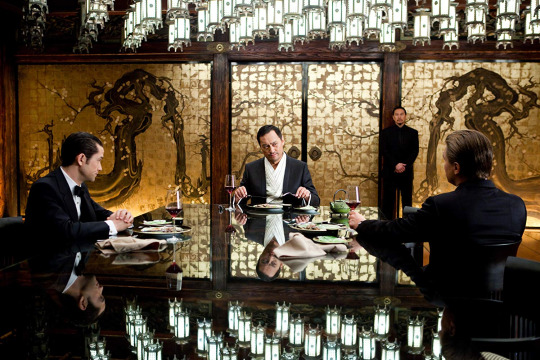
SCOTT PILGRIM VS. THE WORLD - “You cocky cock! You'll pay for your crimes against humanity!” Once again, another exciting director on this list (oh there are so so many!). Ever since Edgar Wright emerged from the British isles, he’s given us some of the funniest films of the past decade and onwards. His Cornetto Trilogy is a blast, Baby Driver is a blast, Ant-Man was going to be even more of a blast if Marvel allowed Wright to do his magical shenanigans his way, and the upcoming Last Night in Soho will surely be a blast also. With Scott Pilgrim vs. The World Wright creates a meta-clever universe taking inspiration from comic books and video games and filled to the brink with wink-wink-nudge-nudge humour, this is an exciting and very sarcastic over the top endeavor. Also, Brie Larson in this movie.....phew!! And unsurprisingly, its all a blast!

2011:
DRIVE - “I just wanted you to know, just getting to be around you, that was the best thing that ever happened to me.” Drive is more of an elegant exercise in style, and its emotions may be hidden but they run deep. A shamelessly disreputable, stylish, stoic, ultra-violent thriller with amazing stunt work, one of the best opening sequences of any movie this decade and a neon-pumped soundtrack that’s a must-own for all vinyl users, if you still haven’t seen Drive, there’s only one thing you can do. Clue: it’s to go watch Drive.
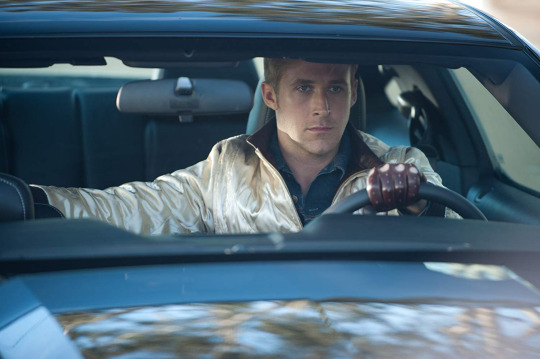
MISSION: IMPOSSIBLE - GHOST PROTOCOL - “Your mission, should you choose to accept it...” Tom Cruise’s deal with the devil allows him to do some literally impossible stuff, and though I don’t condone his Scientology ways, the man’s stunt work and efforts in his area of expertise are worth all the praise and respect. To be honest, I’m commemorating all three of the Mission Impossible flicks that graced our screen this year (Ghost Protocol, Rogue Nation and Fallout). This franchise is like a game of dodgeball, except that Tom Cruise is the dodgeBALL, being thrown and thrust left and right like nobody cares. Also, with me being Russian, the fact that a movie manages to destroy the Kremlin and then have me not hate the film in the aftermath shows that this film is way too fun to hate.

2012:
DJANGO UNCHAINED - “Gentlemen, you had my curiosity, but now you have my attention.” Quentin Tarantino is one of my favourite directors working today. And Django Unchained happens to be my favourite film of his. The writing for this film is orgasmic (I went there!). The way the actors deliver the lines and the lines of dialogue themselves sound almost poetic to my ears. I can quote so many lines from this darn thing. The cinematography is immaculate. The soundtrack choice is great. The performances, my goodness, the PERFORMANCES!! Jamie Foxx does arguably his career-best work here, but also we have Christoph Waltz and Leonardo DiCaprio both chewing up the scenery, and I’m sure everyone has heard the story involving DiCaprio and the broken glass. Django Unchained is an easy choice on this list for me, and possibly in my Top 10 of all time.

LES MISERABLES - “Do you hear the people sing?” The film that is based on a musical that is based on a book that is based on certain true events. Tom Hooper did an interesting choice of having actors sing live in front of the camera during filming rather than pre-record their voices, and it works to grand effect, though Russell Crowe should have probably been given more singing lessons. The movie is one hell of a way to adapt such a popular stage musical. With an opening shot that emphasises the scale of this picture with a zoom-in towards this big ship during a storm being pulled by these poor prisoners, we are plunged into the despair and conflicts of various characters with adroit narrative thrust so that not a moment feels wasted or redundant. You’d think that a film with hardly any dialogue and an overall reliance on singing wouldn’t be so emotional. Yet, somehow, it works. Also props to Anne Hathaway for winning an Academy Award for being in a film for only 5 MINUTES!!
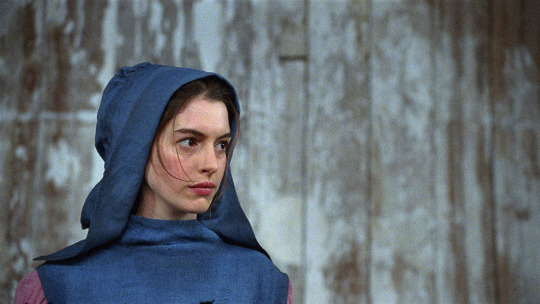
2013:
THE WOLF OF WALL STREET - “Sell me this pen.” Martin Scorsese’s mad look into Wall Street life is a bombastic caper and running at nearly 3 hours, Scorsese and his editing team manage to keep an astoundingly intoxicating pace that keeps you enthralled and engaged throughout. This one is definitely not for the families, as this R-rated fest is filled with drugs, money, sex and everything you can possibly imagine and paints quite the picture of the rich folks of Wall Street. And the middle of it all a bravura performance from Leonardo DiCaprio. Someone needs to give DiCaprio’s agent a raise, this is Leo’s third appearance on this list and we’re only in 2013!

THE WAY WAY BACK - “I'm afraid I'm going to have to ask you to leave. You're having way too much fun, it's making everyone uncomfortable.” Sometimes a little indie flick is enough to lift a human spirit. Real, fun, uplifting and innocent, The Way Way Back dedicated to anyone who felt awkward or out of place at some point in their life, which, let’s be honest, counts all of us. I’m not afraid to admit that. So stop being a b*** and reveal your sensitive side too! Yes, you, the person reading this. Who else could I possibly be talking to? Myself? Maybe. The Way Way Back though is one of the best feel-good indie films of this decade, with the loveable Steve Carell acting very unloveable and Sam Rockwell Rockwelling himself to charm city! If you’ve missed this one, treat yo’self and check it out.

2014:
THE GRAND BUDAPEST HOTEL - “And?? Where is it? What's it all about dammit don't keep us in suspense this has been a complete f***ing nightmare! Just tell us what the f*** is going on!!!” Easily Wes Anderson’s best in my opinion (I have a friend who would argue Rushmore and The Royal Tenenbaums has the better hand but I think my opinion is more valid because it's me), this movie is a glossy, colorful, whimsical deadpan affair with an energetic turn from Ralph Fiennes as the hotel concierge M. Gustave H. as he and his lobby boy run into various Wes Anderson regulars and deal with murderers, stolen paintings, love affairs, prison breaks, and all kinds of crazy shindigs, but all shown in such a casual Wes Anderson way. This movie is like a slice of cherry pie - damn fine!
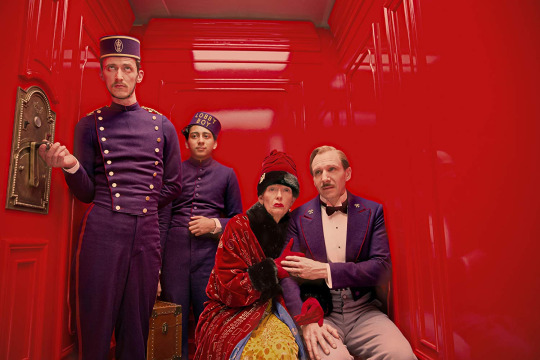
INTERSTELLAR - “Murphy’s Law doesn’t mean that something bad will happen. It means that whatever can happen, will happen.” As promised, Christopher Nolan makes another appearance on this list, now with his space time-traveling epic Interstellar, where he takes inspiration from the likes of Kubrick and Tarkovsky to give us, as always, a tad bit confusing adventure with great visuals and an interesting narrative (though it does sometimes get lost in its own way), however, the key thing holding this piece together is the father-daughter relationship with Matthew McConaughey and Mackenzie Foy (and Jessica Chastain) managing to bring so much raw emotion to their respective roles that you can’t help but want to shed a tear. I mean, I haven’t cried for over 14 years, but I remember when I first watched this film, the audience around me was sobbing quite a few times during the duration of this movie. Give it to Nolan to give us the emotional moments!

2015:
MAD MAX: FURY ROAD - “Oh what a day! What a lovely day!!” Easily the best action movie of this decade. Sorry John Wick, neither you or Tom Cruise could defeat this beast. The sheer, limitless invention behind this movie's exhilarating, preposterous chase scenes highlights action filmmaking at its finest. With big monster trucks and a random guitarist rocking-it in the middle of all the action, it’s like a nihilistic version of a Cirque du Soleil show! And it makes Tom Hardy the calmest person on-screen; no idea how it managed that.

STEVE JOBS - “I sat in a garage and invented the future because artists lead and hacks ask for show of hands.” If there is anyone who can make formulaic, mathematical or technological sound fun and exciting, its Aaron Sorkin. The man has a talent for writing screenplays about difficult and complicated topics yet turning them approachable for the casual moviegoer. Pair him with director Danny Boyle, and the result is Steve Jobs, a look at the man behind the phone. Narratively set during three important product launches of Jobs’, we get to see the behind-the-scenes of his relationships with his colleagues and family members, and this character study is one that could have easily fallen into generic biopic tropes, but it holds it’s own right till the credits roll. Also props for showing that Seth Rogen can actually do a serious role. Who would’ve thought that pot-smoking fella had dramatic chops in him?
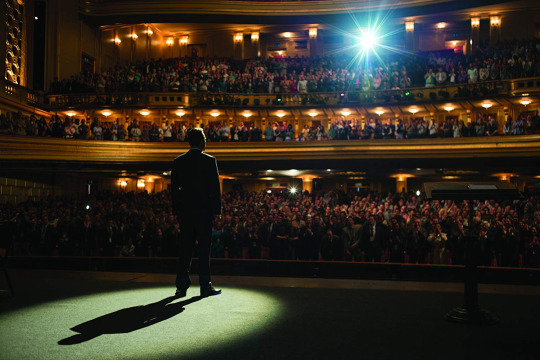
2016:
NOCTURNAL ANIMALS - “Susan, enjoy the absurdity of our world. It’s a lot less painful. Believe me, our world is a lot less painful than the real world.” Fashion designer Tom Ford does sew his suits well. Apparently, he can also make great films too, with 2009′s A Single Man and with said Nocturnal Animals. This movie is truly incredible and I remember it taking me and my friend by surprise when we first watched it at the cinema. It’s shocking. Horrifying. Depressing. Upsetting. Altogether exhilarating. Being of a fashion background, Tom Ford directs the hell out of this movie, with gorgeous shots and great use of colour as well as managing to masterfully create tension and suspense when necessary. Honestly, I know Tom Ford is probably busy at a department store somewhere, but the guy needs to make another movie. The man has a talent.

LA LA LAND - “Here’s to the ones who dream, foolish as they may seem. Here’s to the hearts that ache; here’s to the mess we make.” Oh, La La Land. Damien Chazelle’s follow-up to the also excellent Whiplash. People who know me well know how much I love this movie. An old-school tour-de-force musical that’s a love letter to jazz and the golden age of Hollywood. The city of stars never looked so good. Featuring catchy original songs, excellent dance choreography (the sequence to the song “Lovely Night” is especially memorable) and a romance tale ten times better than the forsaken The Notebook, La La Land is one special movie. I know many are put off by the film’s not so happy ending, however for me it was the only way this narrative could have ended.

2017:
BLADE RUNNER 2049 - “We’re all just looking out for something real.” Similarly to Nolan, Denis Villeneuve is proving to be one of the most exciting directors working today. He’s the man behind such films as *deep breath* Prisoners, Enemy, Sicario, Arrival and Blade Runner 2049. And those have all been done within the last decade. The man constantly makes quality movies of various genres, though lately, he has been leaning more towards science fiction, which is a-okay in my books, since as Blade Runner 2049 proves, he can turn science into fiction like butter on bread. A sequel made 30 years after Ridley Scott’s classic, this visually breathtaking piece is arguably even better than its predecessor with many moments giving you the “wow wow wow wow wow WOW!” factor, and when Ryan Gosling and Harrison Ford are both on-screen they are dynamite. Forget the new Star Wars film (that’s right, I'm throwing shade there), Blade Runner is where it’s at!

PHANTOM THREAD - “The tea is going out. The interruption is staying right here with me.” The supposed last Daniel Day-Lewis film, as he has now apparently retired from acting, but let’s be honest, nothing stops him from simply unretiring at any point. Exhibit A - Joe Pesci. However, like Pesci, if he comes back I’ll only be happy. He’s one of acting greats of our time, and his collaborations will director Paul Thomas Anderson bring out some of his best roles. Phantom Thread is a marvel of a movie. No, I don’t mean that’s its part of the Marvel Cinematic Universe, I mean as in it can fill one with wonder and astonishment. Phantom Thread is PTA’s Gothic dark fairy-tale romance film, which expertly planned shots and scenes where every word of the dialogue counts. There is no wasted moment. And as the film transpires to its dark and unsettling climax, one begins to realize that this, THIS, is what filmmaking is about. Telling an engrossing story in an interesting way with crisp-clear shots and off-the-chart acting at play, with great costume design on display, although the latter is unsurprising due to a major aspect of the movie revolving around fashion.
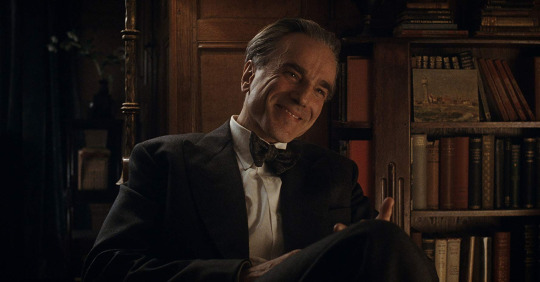
2018:
MANDY - “You ripped ma shirt!! You ripped maaa shiirrt!!” An acquired taste for sure, however, Mandy is indeed something truly special. From first glance, this film might seem like nothing out of the ordinary, especially from the point of view of the plot. Its the usual revenge flick. However director Panos Cosmatos’ vision and how he presents it is so much more unique. And what’s not love in this film? There’s something for everyone! It’s artsy and slow enough for the critics, hip and metal for the nonchalant, gory and violent for the hardcore genre fanatics and of course the Nic-Cage-rage factor is present for the fans of the actor. Alright, it may not be a family film, but this one is worth a watch. The whole thing is bound together by this psychedelic otherworldly environment, with the whole movie conceived in this dark, unsettlingly beautiful yet horror-filled aura that might stray people away, as it might be just too different for them, however, if you are looking for something different to watch, take mandy. I mean, watch Mandy!
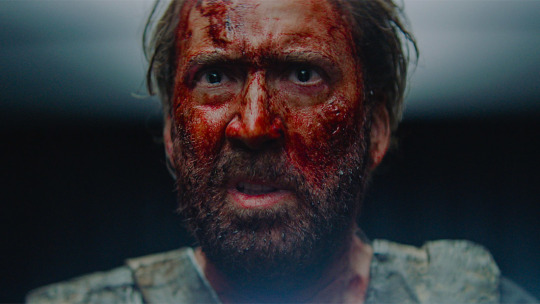
A STAR IS BORN - “Music is essentially 12 notes between any octave. Twelve notes and the octave repeats. It’s the same story told over and over. All the artist can offer the world is how they see those 12 notes.” The film that began all the rumours surrounding Bradley Cooper’s and Lady Gaga’s affair. People, heads up, they are actors! They were putting on a performance! Jeez. That being said, I totally ship them. Nuff�� said. The film though? Yes, it’s good. Some country-style music, romance blooming, Gaga can apparently act, people sing about shallows for some reason...all together works for a pretty decent motion picture. Also, the fact that Bradley Cooper wrote, directed, produced and starred in this gives me so much respect for the guy. He poured his heart and soul into this. And Lady Gaga absolutely shines!

2019:
PAIN & GLORY - “Writing is like drawing but with letters.” Director Pedro Almodovar semi-autobiographical film takes a close look at how one deals with acceptance, being forgotten, symptoms of depression and generally all fairly negative attributes, but delivered in such an honest and profound way that there is a strange lightness that emerges from it all. Antonio Banderas is uncannily vulnerable in the lead role, delivering such an earnest performance that shows a man that is filled with melancholic regret who seeks his own form of redemption. This movie is a thing of beauty.

PARASITE - “You know what kind of plan never fails? No plan at all. If you make a plan, life never works out that way.” Parasite is easily the most original and surprising films of 2019, and possibly the decade, managing to subvert expectations and blend together so many different genres so naturally. To spoil any narrative element of this movie would be a sin, like this one in particular works best when not knowing anything about it. This movie comes to us from Bong Joon-Ho, a South Korean director behind such films as The Host, Memories of Murder, Okja, and Snowpiercer. It’s nice to see the awards ceremonies giving him the proper recognition finally. He deserves it.
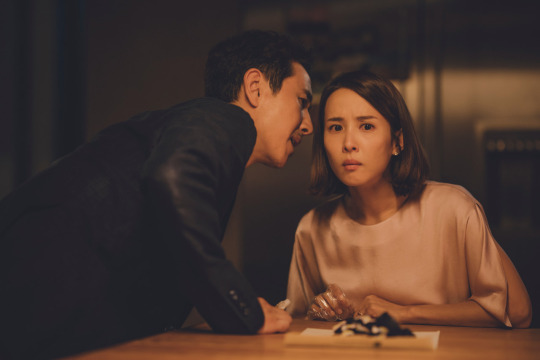
That sums up my Top 20 Best Movies of the Decade list. Of course, there are so many other great films that came out in these 10 years, such as Whiplash, When Marnie Was There, Paterson, Silence, Kubo and the Two Strings, The Nice Guys...I can go on forever. Cinema is a constant ever-growing medium, and it is fascinating to see how it changes through the years, in some ways improving and in some parts not so much. In any case, I look forward towards a new decade of, hopefully, great movies, however, let’s be honest, for all these great films there’s always a Norm of the North, a Scout’s Guide to the Zombie Apocalypse or frickin’ Cats. But let’s hope those will be kept to a minimum. In any case, bring on the 2020s!
#best movies of the decade#top 10#top 20#best films#best movies#best movies of 2019#inception#parasite#pain and glory#mad max fury road#mandy#a star is born#les miserables#the grand budapest hotel#scott pilgrim vs the world#blade runner 2049#phantom thread#la la land#django unchained#nocturnal animals#movies#film#cinema#best films of the decade#best films of the 2010s#best movies of the 2010s#interstellar#drive#the wolf of wall street#steve jobs
423 notes
·
View notes
Text
Big Tech Is Still Profiting From 9/11 Conspiracy Theories, 20 Years on
As the 20th anniversary of 9/11 approaches, several large tech companies are still making money from widely-debunked conspiracy theory content about the terror attack that is distressing to survivors and families of the victims.
YouTube, Google, and Apple are all still allowing users to rent or purchase conspiracy theory films like Loose Change on their platforms, despite warnings from government officials, experts, and survivors that it hinders proper education about what happened.
The past 12 months have brought a reckoning for America's tech giants. D.C. lawmakers, concerned about "fake news," conspiracy theories, and harmful misinformation, hauled Big Tech leaders in front of Congress to explain themselves. Election conspiracy theories, the rise of QAnon, the January 6 attack on the U.S. Capitol, and the coronavirus pandemic have all forced Silicon Valley to act. But Lee Ielpi, a former New York City firefighter whose son Jonathan, 29, died when the South Tower collapsed on 9/11, told Newsweek he finds it "troubling" that the same tech companies still allow 9/11 conspiracy theory content. "It promotes hostility, it promotes hatred," he said. Ann Van Hine's husband Bruce was also a New York City firefighter who died. "It's all gonna come down to money," she told Newsweek.
What happens now? There is a bipartisan push to make tech giants more accountable for the content hosted on their sites. Their provision of 9/11 misinformation conflicts with public commitments to fight dangerous false information and conspiracy theories, likely to be brought up again if Democrats are successful in pushing for an independent January 6 commission to investigate the deadly Capitol riot, which Republicans are poised to block.
— By David Brennan | May 25, 2021 | Newsweek

As the 20th anniversary of 9/11 approaches, several large tech companies are still making money from widely-debunked conspiracy theory content about the terror attack that is distressing to survivors and families of the victims.
YouTube, Google, and Apple are all still allowing users to rent or purchase conspiracy theory films like Loose Change on their platforms despite warnings from government officials, experts, and survivors that it hinders proper education about what happened.
The past 12 months have brought a reckoning for America's tech giants. The de facto role of the likes of Google, Amazon, Facebook, and Twitter as arbiters of the national discourse is under increasing bipartisan scrutiny by the media, politicians, and voters.
This scrutiny is driven by concerns about the incessant dissemination of "fake news," conspiracy theories, and harmful misinformation on these transnational platforms.
D.C. lawmakers hauled leaders of the country's tech giants in front of Congress to explain themselves.
Most of the biggest platforms have removed many conspiracy theory and misinformation accounts, and several even kicked off former President Donald Trump over his continued false claims of electoral fraud.
Election conspiracy theories, the rise of QAnon, the January 6 attack on the U.S. Capitol, and the coronavirus pandemic have all forced Silicon Valley to act.
Lee Ielpi is a former New York City firefighter whose son Jonathan, 29, died when 2 World Trade Center—also known as the South Tower—collapsed on 9/11.
Ielpi told Newsweek he finds it "troubling" and also "very interesting" that major companies still allow 9/11 conspiracy theory content: "It promotes hostility, it promotes hatred."
Ann Van Hine's husband Bruce was also a New York City firefighter who died in 2 WTC. "It's all gonna come down to money, whether they can make money off of movies, or documentaries or docudramas," she told Newsweek.
Loose Change is arguably the most famous and influential content to come out of the 9/11 "truther" conspiracy movement. It was viewed more than 10 million times on Google Video within just a few months. Countless pirated copies swelled its audience further.
The documentary was first released in 2005 and has undergone significant revisions in subsequent re-releases.
Such was the impact of the film that the State Department even released its own fact-check, saying the documentary was founded on "poorly thought-through misimpressions and uninformed speculation."
Overall, State said the film "is researched very shoddily, making numerous mistakes of fact and judgment" but also that none of its shortcomings "prevented it from becoming extraordinarily popular."
Later versions of Loose Change did not include some of the most extreme claims made initially, such as that a missile rather than a plane hit the Pentagon, and the planes that hit the World Trade Center may have been guided with remote control technology.
But the later editions of the discredited documentary remain true to the original Loose Change ethos of heavy skepticism about the official 9/11 narrative, still hinting at government involvement and a broad cover-up of the "truth."
One suggestion that remains constant through the various iterations of Loose Change and 9/11 conspiracy theories more broadly is that controlled demolitions brought down the WTC towers, not the impact of two passenger planes and subsequent intense fires.
Loose Change includes an interview with physicist Steven Jones, who claims there was nano-thermite residue found in the rubble of WTC 1, 2, and 7.
Conspiracy theorists suggest that someone—perhaps the U.S. government—destroyed the towers intentionally, possibly as a false flag operation to justify the subsequent War on Terror.
The film is still available for rent or purchase on Google Play, YouTube, and Apple TV at prices starting at $3.99 for standard rental. It is also listed on Amazon Prime Video though is currently unavailable to buy, with the most recent reviews there posted in late 2019.
A host of other conspiracy theory books and audiobooks are also for sale on Audible, Amazon, and iTunes, while countless free videos are available to view on YouTube.
An Amazon spokesperson told Newsweek: "We believe that providing access to written speech and a wide selection of physical media is important, including titles that some may find objectionable.
"We have policies that outline what products may be sold in our stores, which address content that is illegal or infringing. We remove products that do not adhere to our guidelines."
The spokesperson said the details page for both Loose Change and 9/11:Ten Years of Deception—another conspiracy documentary—are still visible on the website due to customer entitlement.
This means if users have already purchased the content they can still own it in their online libraries. The two documentaries were made unavailable as they violated Amazon's guidelines, though the spokesperson would not say which ones.
The Amazon-owned Audible service had been offering an audiobook of 9/11: Ten Years of Deception, but following Newsweek's queries the product page appeared to have been taken down.
A Google spokesperson told Newsweek that content will be removed from YouTube and Google Play if it is found to break the company's policies and guidelines. As of the time of publication, the 9/11 conspiracy examples flagged by Newsweek had not been taken down.
Apple did not respond to Newsweek's requests for comment. At the time of publication, Loose Change was still available for purchase on Apple TV. However, the Apple Books product page for the 9/11: Ten Years of Deception audiobook appeared to have been removed.

9/11 conspiracy theorists protest outside the memorial service at the World Trade Center construction site on September 11, 2011, the 10th anniversary of the attacks. James Leynse/Corbis Via Getty Images
There is a bipartisan push to make tech giants more accountable for the content hosted on their sites. Section 230 legislation gives tech giants immunity for illegal content by making a distinction between a distributor and publisher of content online.
Social platforms are identified as the former and so do not have all of the same responsibilities as a publisher making editorial decisions.
Trump and his allies have repeatedly railed against Section 230, arguing platforms are publishers exercising editorial discretion and should be treated as such under the law.
Democratic senators are pushing the new SAFE TECH legislation, which would amend Section 230 and force platforms to take more responsibility for the content users upload.
Companies are still free to host questionable content and to charge users to access it or make money from advertising around it.
Still, their provision of 9/11 misinformation conflicts with public commitments to fight dangerous false information and conspiracy theories.
In October, YouTube released a statement noting it would ramp up efforts to remove dangerous conspiracy theory content from its platform, fearing its role in encouraging "real world violence."
The video platform said these steps were taken to reinforce "four pillars," which are commitments to remove violative content, reduce the spread of "harmful misinformation," encourage authoritative voices, and reward "trusted creators."
Amazon has recently removed books from sale promoting dangerous supposed "cures" for autism.
It also booted social media app Parler—popular with right-wingers and where misinformation and conspiracy theories were rife—off of its servers in the aftermath of the January 6 attack.
Google banned coronavirus misinformation adverts early in the COVID-19 pandemic, and—along with Apple—cracked down on apps spreading coronavirus conspiracy theories soon after the virus spread worldwide in 2020.
However, it appears the 9/11 attacks are not currently treated the same as the coronavirus pandemic, the 2020 election, QAnon, and other subjects ripe for misinformation.
Conspiracies about 9/11 are less politically relevant right now, and also less of an immediate threat to public safety.
But some of those with a personal connection to the tragedy said the tech companies are undermining efforts to educate Americans on exactly what happened on that pivotal day, and what it meant for the country and the world.
Both Ielpi and Van Hine work with the 9/11 Tribute Museum in New York City, which provides guided tours to visitors explaining what happened.
The organization has to date given more than 346,000 tours and hosted 4.1 million visitors at its museum on Greenwich Street, just blocks from where the Twin Towers once stood.
"Education is the key to make this world of ours better," Ielpi told Newsweek from the west coast of Florida, where he now lives. "If we fail to educate our young people, we have failed miserably."
But a lack of mandated 9/11 education in school curriculums and the pull of popular conspiracy theories online is making that work more difficult.
"I was actually surprised how many videos they were," Van Hine said, noting that conspiracy theory content is mixed up with footage of real memorial services.
"I think it should be a different category.
"When you can watch a true documentary next to something that is promoting the conspiracy theory, that can get confusing.
"We have to make sure we're educating children to question, but then to also believe there are things that are facts and truth."
On the internet, "you've got a lot of information but you don't have a teacher," Van Hine added.
Ielpi said large media organizations and tech companies "have a responsibility to try and promote understanding," regardless of their pervasive profit motives.
"They should be ashamed of themselves. Are they hiding under a rock? They're going to say: 'That's not our responsibility.' Well then, whose responsibility is it? It's all our responsibility."
This is a global problem. Van Hine recalled a tour after which two young European men showed her photo of United Airlines Flight 175 about to hit 2 WTC and asked if she thought it was real.
"When something is inexplicable, so unbelievable, we believe that there has to be somewhat more than we're being told," she told Newsweek.
Ielpi said tech companies are flirting with Islamophobia and other hateful sentiments by failing to address conspiracy theory content on their platforms.
"These organizations will let these conspiracy people put their garbage out there for everybody to see, but yet still afraid to speak the truth about 9/11," he told Newsweek.
Tech giants and media organizations, Ielpi said, have failed to seperate Islam the religion from the tiny number of "radical Islamic fundamentalists" that carried out and celebrate the attacks.
"Why are we continuing to be afraid to talk about radical Islamic fundamentalists?" he asked.
"We're hiding in the shadows, afraid to speak the truth," he told Newsweek.
"How long do we continue down this road, and how long do we allow these major organisations—Amazon and the rest—to promote hatred?"
"We've all failed. All of us have failed miserably."
Ielpi continued: "Unless we promote this understanding about the Muslim religion, and how wonderful it is, the more we're going to promote hatred by allowing these organizations to put this trash on the web."

People walk in the street in the area where the World Trade Center buildings collapsed on September 11, 2001 in New York City. Mario Tama/Getty Images
Helen Lee Bouygues, a misinformation expert and founder of the Reboot Foundation, which looks to improve public critical thinking, said conspiracy theories thrive when people feel vulnerable and powerless, whether in the aftermath of 9/11 or in the midst of a pandemic. This is exacerbated by social media and the internet, she said.
Tech giants "deliberately have an algorithm to prey on people's emotions so that your eyeballs stay on their social media platforms for longer."
She added: "The other phenomenon that social media has enhanced further is this group that sense of belonging. It's also a way for people to have a sense of being in a way of being an insider."
Conspiracy theories have strong sticking power. People still argue about President John F. Kennedy's assassination and the Moon landing.
Even Pizzagate—the 2016 theory that prominent Democrats were running a pedophile ring out of a Washington, D.C. pizzeria—has recently reemerged on TikTok.
Constant exposure can erode logic. "If people hear enough about misinformation and lies, they start believing it," Bouygues said.
This is true of conspiracy theories, fake news, or propaganda campaigns by governments and special interest groups.
"The general population does not, is not willing to take the time or unable—in terms of their media literacy skills—to identify what content is coming from special interest groups."
The 9/11 conspiracy theories drove a wave of online anti-government skepticism, particularly given the subsequent invasions of Afghanistan and Iraq, the latter justified with false intelligence and conducted despite United Nations opposition.
Such anger—whether legitimate or misplaced—can help drive new conspiracy theories.
Karen Douglas, a social psychologist at the University of Kent in the U.K. and an expert in conspiracy theories told Newsweek: "It is definitely the case that people who believe in one conspiracy theory tend to believe in others, even when the conspiracy theories are about completely different events, and even when they are about the same event but directly contradict each other."
Some 23 percent of Americans believe that 9/11 was an "inside job," according to data collated by Statista. Forty-five percent strongly disbelieve the assertion, though another 22 percent remain unsure.
But more people at least think something is amiss. A 2016 study by Chapman University found that more than half (54.3 percent) of those surveyed believed the government had concealed information about what happened on 9/11.
This is more than for the JFK assassination (49.6 percent) or the existence of aliens (42.6 percent).
Truthers have also gone on to be involved in other conspiracy theories, helped on that journey by Loose Change, which was perhaps the first viral blockbuster.
Last year, podcast host Moe Rock told Esquire: "Loose Change was the film that sent a lot of my peers down the rabbit hole. It was one of the fundamental catalysts for the online conspiracy theory boom. Probably the biggest one."
Bouygues said political and business pressure will be the deciding factor as to whether tech giants act: "It's purely political. The subject matter that is being raised, that is being addressed—it's clear that the social media companies are watching what Washington D.C. cares about."
Recent steps only came because President Joe Biden took the White House, she added: "They were worried that they were actually going to be liable for all of their content."
Douglas said: "It's not for me to say what content should be banned or limited, but some conspiracy content can be harmful and indeed, some of the social media companies are making efforts to reduce the availability of this content online."
Van Hine and Ielpi, meanwhile, said they will continue to educate Americans about the tragedy as Washington, D.C. and Silicon Valley do battle over the future shape of the internet.
"If people are learning the history and learning some of the stories, they can use reason and logical thought hopefully if they see this conspiracy stuff," Van Hine said.
"If you have no background information," it's more difficult, she added.
Van Hine fears that 9/11 conspiracies might grow in popularity as the event recedes further into history and personal connections with the tragedy are lost.
"Once it becomes history it almost becomes free game. I think maybe the generation that lived September 11 needs to just start telling stories."
This year will be a painful one for the bereaved and survivors.
"Those directly affected will have to decide what you're going to watch and not watch," Van Hine said. "There is going to be a frenzy of stuff."
Ielpi's focus is the positive legacy of a horrendous event.
"We need to understand the good that has come from 9/11," he told Newsweek, noting the many scholarship funds set up by bereaved families.
"People who lost loved ones on 9/11—they didn't turn to hatred, they didn't turn to conspiracy.
"My best friend, my son, was murdered on 9/11. Could I have turned my loss into hatred? You're goddamn right I could. But you know what? Hatred loses in the long run."

Mourners gather at the 9/11 Memorial & Museum in New York on September 11, 2020, as the U.S. commemorates the 19th anniversary of the 9/11 attacks. Angela Weiss/AFP Via Getty Images
1 note
·
View note
Text
I’ve seen a couple people now say something like, “I honestly didn’t see Catradora coming,” and I’d like to talk about that. At least in my first viewing, explicit romantic confirmation doesn't really exist for most of SPOP (until season 5 and parts of season 4). But that's why this show is so important.
I want to acknowledge first off that what I’m about to say assumes a lot about people and might not be correct. I know assuming isn’t really a good thing, but I’m working with limited information about who they are, and can only attempt to explain based on that.
The people who don’t see Catradora coming might be looking at the show with a heteronormative lens. In other words, they assume the relationship between Catra and Adora isn't romantic because media has never/rarely shown a romantic relationship between two women. In their mind, the possibility just doesn’t exist. This is not an attack on those people. The fact that they are trying to understand is a good thing. It's just a bias that they might have as a normal result of growing up in today's world.
I think why the show works so well for me is that a lot of the romantic or emotion-heavy moments could be interpreted as "just close friends/sisters;" except within the context of an overall narrative, the show expects the audience to create a romantic relationship.
Not much, as far as I saw, explicitly showed Catradora as romantic. Catra and Adora don’t do typical romantic things to each other, the scenes they are in don’t always make a point of symbolism or parallels or other devices to say “ROMANTIC!” And for many characters or relationships, that would be the end of it.
But Catra and Adora's relationship is central to the show. Time and time again we are shown that these are the two most important characters, both to the audience and to each other. In many other shows, when there are two characters like this, who continuously take center stage, and they have a relationship, the outcome is romantic. We’re supposed to take that context and apply it to SPOP. Why do people groan or even say “that felt forced” about some other straight relationships in media? Because we naturally expect romance when a male and female lead have a deep relationship and they are both the stars. (Sometimes even less than that, and sometimes to the detriment of that media.)
She Ra says, "Here's two female characters who feel very strongly about each other, and their relationship is central to the show. Do you assume they will be romantic eventually, or not? If you do not, why? Could it possibly be that you don’t expect a romance between two women?” She Ra creates a chance to talk about that bias someone might have. It basically boils down to, "If one of the characters were male, would the interpretation of the Catradora relationship change?" And I'm going to use two examples to highlight this.
First, Avatar: The Last Airbender. Even casual fans of that show are probably familiar with Zutara (Zuko x Katara ship). Second, Harry Potter, and the Dramione ship (Draco x Hermione). Both of these are fairly popular. You don't have to ship either or both of these yourself, you just need to understand why others ship it. In both instances, a villain character and a hero character are shown to have very strong emotions about each other, in their actions and words. And as a result, a lot of people assumed that those emotions were/could be romantic. (Hate and love, two sides of the same coin, and all that.) But that's it. There aren't any or many explicitly romantic events or scenes for those ships.
Now look at She Ra. A villain character and a hero character are shown to have very strong emotions about each other. It's arguable that there aren't any explicit romantic scenes for the ship, either (Princess Prom aside). It's only really explicit that they have strong emotions about each other, not necessarily romantic. So why, then, is Catradora any different than Zutara or Dramione? If you understand why those other two can be romantic, but not Catradora, then the only major difference that I can see with Catradora is that they are two women. The idea of two characters like Zuko and Katara is romantic, to many people. The idea of two women in a romantic relationship is not an immediate first thought, so the assumption that is left is "sisters or close friends."
And then...Season 5 happened. There are general cute scenes with blushing, a typical tell for "romantic." The big emotional scenes start hinting that there is more than "just friends." We get Catra, saving Glimmer, for Adora. We get Adora, coming back for Catra. We get the scene from Save the Cat where Adora throws herself off a bridge after Catra. And again, these aren't explicitly romantic. There are no hearts or other symbolism, there are no immediate obvious parallels to other relationships. It's just very very very very very strong feelings about each other. Finally...
Adora doesn't want me. Not like I want her.
There it is! This is the explicit romantic confirmation of Catra's feelings. The show says, "This is how Catra feels, now look back on everything earlier with this new information. Now that we've confirmed this, do your earlier assumptions about their relationship change? Can you be brave enough to challenge your own bias and see the earlier scenes in a new way?"
(SPOP then goes on to reinforce that with more and more romantic scenes, if that wasn’t enough. “I love you” and a kiss really leave no room for doubt.)
And again, it's possible people have already thought about this. It's possible they’ve already considered, and simply interpreted the show differently, and said “I still don’t see Catradora being hinted at.” But I assume that’s not what happened based on my limited information. This is why She Ra is so important, because people watch the show and they do ask questions. Like I said, I’ve run into a couple people already who want to know why they didn’t see it coming, and now I have a chance to genuinely start a conversation that maybe, they hadn’t thought much of before.
23 notes
·
View notes
Text
thots on little women (2019)
or, y’all are giving greta gerwig too much credit (part two)
The character arc that was changed the least from the source material, but that still manages to personally offend me the most, is, of course, Amy’s. It’s no secret that Gerwig is an Amy stan, or at least more of a fan of her than most people. I am as well, which is why I am so disappointed with this particular arc.
It’s honestly more disappointing because Gerwig handled parts of Amy’s arc extremely well, namely, her relationship with Laurie. Gerwig did an excellent job of making Amy and Laurie’s relationship feel less like a consolation prize since Laurie did not end up marrying Jo and more like a fully realized and reciprocal relationship, arguably more so than Alcott herself. HOWEVER, and this is a big however, the Amy/Laurie relationship is not the only important part of Amy’s characterization in the novel, and unfortunately, it is in the movie.
Amy starts out the novel as a selfish twelve year old girl, which is evidenced in no other but the infamous book-burning scene. However, throughout the novel, she grows out of that selfishness and into a more selfless, self aware woman. (Again, whatever your thoughts on “learning to be selfless” as a trope in women’s narratives are not necessarily relevant.)
For example, in the first half of the novel, one of Amy’s most notable chapters deals with pickled limes. For anyone who only watched the movie or doesn’t quite remember the book, a short summary:
Amy, the only one of the March girls who attends school, is upset because the girls in her school have been trading pickled limes. The limes are seen as a status symbol, which can be traded for little trinkets, bestowed upon favorites, or indulged in in front of your enemies. The pickled limes trend has become so popular that the teacher, Mr. Davis, has banned them in the classroom, which has done nothing to curb their popularity. Amy, who is relatively popular among her classmates regardless of her relatively lower class status, has been gifted several limes but had no way to return them, is greatly “in debt.” When Meg gives Amy enough money to buy a whopping twenty-five pickled limes, she flaunts and preens her way around the classroom until a girl she snubbed tattles to the teacher and gets all twenty five limes taken away.
This scene is a good example of the beginning of Amy’s arc of overcoming her one major personality flaw. It shows how her selfish nature is really just immature behavior, and as she ages, she matures out of that childishness. Another good example of this arc happens when Beth contracts scarlet fever. At first, she complains, saying that she would rather contract the deadly disease than to go to her Aunt’s house, but as she remains there, we see her mature and even grow fond of Aunt March. Her personal arc independent of Laurie was a big part of Amy’s plotline, and it was unfortunately left out of the movie.
The most glaring example of this is the omission of one of the most important scenes of Amy’s arc in the book: the occurrences at the fair. Again, indulge me in a brief summary for those who won’t know exactly what I am talking about:
The mother of one of Amy’s friends, Mrs. Chester, holds a three day fair for all of the girls in Amy’s social circle. As Amy is the most talented and most well-liked of the girls, she has the best table at the fair, at the very front, where she is to sell her beautiful artistic creations. However, her friend, May Chester, is jealous of her, and seeing this, Ms. Chester takes the table from Amy and gives it to May, relegating Amy to the back corner to sell flowers. At first, Amy is incredibly upset, and takes all of her art back to the table with her, however, after talking with her family, who are properly indignant on her behalf, she resolves to be gracious and humble and gives her own drawings to May to sell. Seeing this, Jo tells Laurie to take all of his handsome, college-aged bachelor friends to Amy’s table, which he does, and they spend the entire next day of the fair flirting with her and buying every one of the flowers from Amy. On the final day of the fair Amy, who has entirely overcome her own selfish wishes, tells Laurie and his friends to go do the same to May. This string of selfless acts is seen by Aunt March and Aunt Carrol (who in the novel has half of Aunt March’s role in the movie) and is the premier reason behind Aunt Carrol deciding to take Amy to Europe instead of Jo.
Leaving this scene out of Amy’s narrative in the movie is, I think, unforgivable. The inclusion of this scene would have exponentially improved Amy’s arc, for three major reasons:
This scene is the culmination of Amy’s “selfish to selfless arc”. Again, regardless of your opinions on whether this is a good lesson for her to learn, it is an arc, and as the movie stands currently, she simply doesn’t have one. The occurrences at the fair show her finally growing out of her childhood vices into the mature woman we see in Europe, and to exclude this scene does her a disservice.
Prior to her trip to Europe, this is one of the only scenes in the novel where Laurie and Amy have any sort of interaction. If Gerwig wanted to more fully develop the Amy/Laurie romance I cannot imagine the logic behind leaving this scene out. It would make the romance seem less rushed, which has been a common critique of their love story since the book came out, and would even provide context for Amy’s “Not when I have spent my entire life loving you” line which Gerwig added to the narrative.
As previously mentioned, this scene is one of the main reasons behind Amy being allowed to travel to Europe with Aunt March/Aunt Carrol. Within the movie, this reasoning is less obvious, especially given the fact that Aunt March had already told Jo she would take her to Europe, and the inclusion of this scene would have made the trip feel more earned for Amy.
Greta Gerwig has made no secret of the fact that she both a feminist and a fan of Amy March. I am both of those things as well, which is why I cannot understand her logic behind robbing Amy of a complete arc. In the movie, the most important parts of Amy’s arc are all tied to a man. Even that arc is not as fully developed as it could be. Gerwig did a magnificent job with Amy’s overall likability, but that is not the same thing as writing a fully realized arc for her.
But even though Amy is my personal favorite character, and I am more personally invested in her arc, Gerwig’s mishandling of Amy is not the most egregious sin committed in this movie. That honor is reserved for Jo’s arc.
Part Two: Jo
A Buzzfeed article entitled “The New ‘Little Women’ Makes Space for Jo’s Queerness” claims that “Gerwig’s adaptation, without being too explicit about it, does gorgeous justice to that [queer] reading.” An Advocate magazine article called “Greta Gerwig Brings Out the Inherent Queerness of Little Women” makes the bold claim that the 2019 Little Women “offers the queerest and most feminist reading yet.” An even bolder declaration by them magazine says that “The New Little Women Basically Proves Jo is Queer”. Gerwig has been lauded both by critics and by her own actors for creating an explicitly queer narrative for Jo March.
As previously mentioned, I do not generally read Alcott’s Jo as queer. However, upon my first encounter with this headcanon, I could immediately see why so many people did see her this way, and why this interpretation is so beloved. Jo has a lot of non-stereotypically straight traits that have made her something of a queer icon in many progressive literary circles. Both the way she bemoans being “born a woman” and her intense desire not to marry spoke to a lot of queer or non-cis readers, many of whom were excited to see her portrayed this way on the silver screen. And though I am not particularly attached to this headcanon, as a bi woman, I too was excited to see her that way.
And then… I didn’t.
Look, I hate to burst y’alls bubble, but there is literally not a single second in the movie where Jo is anything resembling queer. At best, she could be read as aromantic/asexual, but that’s about it. (Note: Obviously I don’t intend to imply that being aro/ace is somehow “lesser than” being L G B or T, but obviously the form of queerness people were expecting is one in which Jo is explicitly attracted to women.) There are no subtle looks in the direction of another woman, no scenes in which Jo expresses any negative emotion towards the idea of marrying a man specifically. She doesn’t even have a single female friend outside of her sisters.
One of the reasons the 2019 Jo (and by extension, Laurie), have been hailed as queer icons is their relative gender fluidity. Jo and Laurie exchange clothes throughout the movie, which was intended to display their “gender fluidity”. I knew about this particular facet of the movie before going to watch it in theaters, so I was looking for these occasions specifically, and I still couldn’t tell that they were supposed to be gender neutral. Maybe that’s just me, because I don’t know a lot about civil war era clothing, but whatever.
The other reason that Jo is considered queer in the movie is her rejection of traditional Civil War era femininity. She doesn’t want to get married, and she has no interest in “girly” things like dresses or parties. But neither of those things are specifically queer. Being “not like other girls” as your premier personality trait is not queer, it’s just garden-variety misogyny.
Even Jo’s big scene where she laments her competing desire to stay unmarried and her intense loneliness, has nothing marking it as explicitly queer. “I’m so sick of people saying that love is just all a woman is fit for,” she bursts out. Love. Not love for a man. Not even marriage. She is decrying the entire concept of love.
“But Rae,” I can hear you asking, “what about the ending, where it’s implied she doesn’t marry Professor Bhaer and gets to publish her novel?” To that, there are two important things to consider. One: the ending is intentionally portrayed as optional. Even though it is heavily implied that Jo did not go off and get heterosexual married at the end, it is possible to ignore that ending or do some light mental gymnastics to make the two versions of Jo’s ending coincide. And I’m not just saying this as a worst-case-scenario, I actually have seen people do this, in fandom and my own life.
Secondly, even if you take the ending as completely factual, we still have all the scenes involving Bhaer previous to the ending to give some hint of Jo’s sexuality. We never see her even look at another woman, but she flirts with Bhaer and blushes when he looks at her and asks for his opinion on her work. Even ignoring the straight-as-default setting of most casual viewers, canonically, Jo has only ever shown interest in men. One man specifically, but still.
“But she could still be bi/pansexual, or suffering from compulsory heterosexuality,” I hear. And this is basically the crux of my argument. In fandom, you don’t have to assume straight as the default, and it's probably better not to. Bi/pan headcanons for “straight” characters are a good, positive way of adding to a fandom culture. However, when it comes to canonical representation, the opposite is true. Representation is not representation if it is not explicit.
I’m not saying that queer viewers cannot feel represented by Jo in this movie. I personally feel represented by Hermoine Granger as a black woman, due to her “wild, bushy hair” and her penchant for social activism (SPEW). However, I cannot give JK Rowling credit for that representation because she had nothing to do with it. She did not do any of the hard work to actually make Hermoine a black woman. In the same way, we cannot credit Gerwig with adding queer representation to Little Women, because she didn’t.
Conclusion: The Response
I know reading this essay probably makes me seem like a Greta Gerwig-hater or like I disliked the movie. Both of those things are untrue. As previously mentioned, I loved the movie. I’ve watched the Amy/Laurie scenes of the movie like a hundred times already. I also don’t hate Greta Gerwig. This is the only movie of hers that I’ve seen, but I heard all about Lady Bird and its popularity, and I think the directing of Little Women was excellent. The fact that Greta Gerwig is a very talented filmmaker is not necessarily an arguable point.
I don’t believe that Gerwig had to fully develop any of the sisters. I don’t even think that Gerwig is required to add queer representation (or racial diversity for that matter) to her movies. Greta Gerwig decided to adapt an extremely white, cishet Civil War era book into an extremely white, cishet Civil War era movie. Hot take time: she is entirely in her rights to do that.
BUT. The thing that bugs me the most about the movie, and is basically the impetus behind me writing this essay, is the response to the movie. For whatever reason, Gerwig’s Little Women adaptation has been deemed more “woke” than it actually is. Little Women (2019) has been lauded for its strong female presence (even though there are only white, cis, straight women), for it’s development of the other, non-Jo sisters (even though it doesn’t), and for giving its lead space to be queer (even though she isn’t).
Greta Gerwig made an excellent film, but she did not do anything that has never been done before. I liked the movie, but I’m not about to go campaign for Greta Gerwig or the movie to win an Oscar. In general, we need to be less willing to acclaim those who do the bare minimum.
Again, I’m not good at writing conclusions. At a certain point I’m going to just start repeating myself, so I’m going to go ahead and cut myself off now. Again, if anybody has any opinions on this, agree or disagree, please come talk to me about it! I’d love to hear any other thoughts.
#little women#little women (2019)#raetalks#meta#meg march#jo march#beth march#amy march#timothee chalamet#emma watson#saorise ronan#eliza scanlen#florence pugh#greta gerwig
48 notes
·
View notes
Text
THE POSITIVE & NEGATIVE; Mun & Muse - Meme.
fill out & repost ♥ This meme definitely favors canons more, but I hope OC’s still can make it somehow work with their own lore, and lil’ fandom of friends & mutuals. Multi-Muses pick the muse you are the most invested in atm. tagged by: @breselin, & @citialiin; thank you for the tag! I was planning on stealing it. tagging: @rosiqe, @noirtux, @goldgliitters, @ndeavor, @reminiscentsky, @battleshell, @ettards & whoever else wants to do this. Just steal it & tag me. -- go wild.
My muse is: canon / oc / au / canon-divergent / fandomless / complicated [loosely affiliated mainly due to the fandom’s size. I am quite open to crossovers of any kind, really even if it takes me a while to open up.]
Is your character popular in the fandom? YES / NO. [she is one of the deuteragonists; has been around since the pilot & while she has been sidelined during the epilogue, she was usually at least around with her story arc / actions having a huge impact on the overall story as such.]
Is your character considered hot™ in the fandom? YES / NO / IDK. [I guess so? Then again, that’s an objective statement so I am just? Assuming? I personally find her general aesthetics to be quite amazing; she is a dance battler, graceful & elegant; a ballerina with a classical theme that runs through her design & attitude like a red threat. I have a weak spot for stuff like that.]
Is your character considered strong in the fandom? YES / NO / IDK. [surprisingly, Pearl is considered to be the strongest non-fusion Crystal Gem according to the show (until Lapis Lazuli comes around). -- I assume prowess wise Pearl is high up next to Garnet & Rose whenever she can actually get her crap together due to having fought countless battles &, most importantly, survived the war in which she fought & shattered opponents thrice her size.]
Are they underrated? YES / NO / IDK. [partially yes, partially no. She is controversial for sure but just as popular. At some point, the show delved deeper into her issues & actually had her mess up quite severely; the fandom’s reaction was so harsh that the showrunners had to interfere by “apologizing for making her human”. Pearl has always been a target for extreme criticism; some of it justified, some just straight down ridiculous. -- It’s easy to forget what kind of complexity a character can offer when her resolution arc happens literally ten episodes before the show ends.]
Were they relevant for the main story? YES / NO.
Were they relevant for the main character? YES / NO / THEY’RE THE PROTAG. [Pearl becomes Steven’s guardian / mentor after the death of his mother Rose Quartz & can later be considered his stand-in mother alongside Garnet. It is safe to say that her actions have influenced Steven the most, both negatively & positively.]
Are they widely known in their world? YES / NO. [she earned herself the title ‘The Renegade’ during the war for being the first (& arguably only) pearl that broke out of her conditioning; she used to be a wanted criminal / traitor to her own kind for 5000 + years until her record was cleared upon the beginning of Era 3 (aka official end of the Gem War). She is still being referred to as ‘The Renegade’ now & then; while she used to be proud of the title she has grown to resent it a lot these days.]
How’s their reputation? GOOD / BAD / NEUTRAL. [it depends on who you ask; Homeworld Soldiers? Well, they despise her; she is a defective Gem & a war criminal. She stands for all that is wrong with the rebellion; I mean a pearl who refuses to serve & calls herself an individual? a warrior? THE SCANDAL!! Some soldiers are afraid of her, call her ‘Rose Quartz’ terrifying renegade’, even. However, in her ranks aka the rebellion, she is being seen as a silent heroine. A celebrated war hero, Rose Quartz’s right hand & sole confidante (some even whisper that there is more between them).]
How strictly do you follow canon? — uh... well. Not really but... kinda? Steven Universe’s canon is messy & occasionally QUITE inconsistent. -- while it gives you vague details, some lore can best be compared to a gaping void. Thus my reason for partial divergence isn’t lack of good character writing (because Pearl is very, very complex even on screen), but rather inconvenient lore holes & SU’s habit of leaving important facts uncommented, “unshown” or just stuck between the lines. While I don’t mind deep analysis, some of those “buried facts” fly other people’s heads which leads to terrible, terrible fanon takes. -- in order to distance myself from that, I usually take canon & expand it with my own headcanons & metas based on lore / show analysis. I often alter / cut what does not fit my narrative BUT I always root my stuff in actual canon occurrences.
Sometimes, I just straight down change certain things that canon messed up in my pov. For example, in order to make it explicitly clear that she fell in love & rebelled on her own volition (even if it has been confirmed like ten times by now), my Pearl is around 1500 years older than the original & (in)directly served White Diamond before being handed to Pink (not the only reason for that change but well I will elude on it eventually). She was a default pearl with no customization & usually spent most of her time with organizing matters in the palace until Pink accidentally broke her customized pearl; Pearl was then 'poofed’ & handed over; she possessed a more sensible personality & a strict rule protocol that was supposed to help her “raise” Pink Diamond into the ranks of a ruler. Most other changes are rather minor but very important or essential to my portrayal (for example whenever “A Single Pale Rose” is concerned: Pearl suggesting the “sealing of the secret”, her not wearing the dress from the beginning, her not calling Pink “my diamond”, her arguing with Pink long before the fake-shattering took place, etc etc.); the epilogue series is another can of worms I will get to eventually but lemme just say I didn’t really like the way Pearl behaved / the plot-bound ooc-ness she sometimes yielded to & other stuff.
SELL YOUR MUSE! Aka try to list everything, which makes your muse interesting in your opinion to make them spicy for your mutuals. — well, she is a lesbian space rock from a strange universe; whose body is basically a manifestation of light? She is probably the most passionate being you will ever meet. -- if you are looking for a speedrun through human history, she is your gal. If you need someone to beat up some bullies, she will gladly come & smack sense into people; if you want to learn everything about Gemkind, sit down & listen because she won’t stop talking any time soon.
By definition, Pearl is a good person; the extreme loyal kind, absolutely & helplessly dedicated to a cause. She wears most of her emotions on her sleeve, comes off as genuinely caring, protective & trustworthy. She is empathetic & observant, she will always be there for you in one way or another. She is smart, loves to read & indulges in the higher arts such as (romantic) poetry, singing, painting, music (violin, piano, bass) & dance (predominately classic ballet / waltz but she has grown rather fond of jazz lately). Her knowledge about Earth & all that lays beyond is vast & if you ever want to see whatever is out there, she is the type to take you on a space tour with no questions asked. She fences, has learned to wield a lance, can engineer very well, has a very peculiar but... sorta adorable kind of humour that can either be hella obnoxious or super funny. There is no in-between. Pearl loves science, baking, housekeeping, ice-& roller-skating & is more than willing to take people along whenever she visits the rink. If you ask her for advice, she will gladly give it; if you need help, she will be the first to raise her hand. Pearl is orderly, has a strong sense of justice & a fierce, dedicated kind of resolve.
Now the OPPOSITE, list everything why your muse could not be so interesting (even if you may not agree, what does the fandom perhaps think?). — Pearl. Is. A. Mess. No questions asked. She is an introverted, nervous, neurotic, grief-- & trauma riddled mess who loves to pretend & rationalize things to death. Her self-esteem is abysmal, she is extremely jealous, obsessive & possessive [to the point where she straight up murdered men just because they dared to be around her girlfriend]. Her mind is a compartmentalized mess of repressed memories & heavy, untreated cptsd woven into it; Pearl lives too much inside her head & gets overwhelmed by her emotions far too easily; she feels too much all at once & lets her temper get the best of her.
She is self-centred, does not seem to understand that words & reckless actions hurt people, believes that only she deserves to grieve Rose & willingly destroyed relationships just to soak in her own misery; self-destruction is her forte & she will indulge in it no matter the consequences. She is often high-strung, judgemental, always has to be right, overachieves & overdoes whenever a chance is given. -- she can be petty, arrogant & desperate for validation. -- Needless to say, Pearl is the kind of person that pretends to be fine for years but once she cracks she reveals that she is anything but. -- she cannot move on, hates men, & just is a lot to deal with. Getting in touch with her means you run the risk to get dragged into her mess, whenever you want it or not.
What inspired you to rp your muse? — first & foremost, my love for complex, purpose-driven female characters. I am a sucker for the “introvert, plagued lady” type & once parts of Pearl’s past were revealed during Season 1 I was sold. Pearl seemed relatable to me, extremely human & raw in her behaviour. While I love most of the SU cast equally, Pearl just wouldn’t let me go. Her aesthetic is amazing, her past intriguing. -- her connection to ballet & classical music, her elegant & graceful design just spoke to me.
What keeps your inspiration going? — music. music. oh, and music. Poetry, long walks (I am not kidding), analysis, meta & hc writing, discussions with writing partners or my rl partner @rosiqe.
Some more personal questions for the mun.
Give your mutuals some insight about the way you are in some matters, which could lead them to get more comfortable with you or perhaps not.
Do you think you give your character justice? YES / NO / I SINCERELY HOPE I DO? [ despite my emo peculiar take on the character, I do hope that people hear her voice whenever they read my replies. ]
Do you frequently write headcanons? YES / NO / SORT OF? [ I wish I could post more but I am very, very slow & a perfectionist at heart. -- I try to compensate for my lack of actual hcs by rambling in my tags. Most part of the time said ramblings include personal headcanons or analyses of specific scenes that include personal takes on pivotal situations; while I gather & write them down eventually, it can take me a long time to get stuff done. -- it is easier for me to jus blabber on & on in the tags. ]
Do you sometimes write drabbles? YES / NO [ all my ask replies are drabbles, ngl. ]
Do you think a lot about your Muse during the day? YES / NO
Are you confident in your portrayal? YES / NO / SORT OF? [... a sore topic. While I love my headcanons & have gotten quite proud of my writing over time, I constantly doubt myself regarding the “ic”-ness of my responses. I like to believe that I am doing rather well, but I am not confident, no. ]
Are you confident in your writing? YES / NO. [ it took me a long time to develop my style; while I always struggle to believe in my portrayal I am quite confident in my writing as such. I know it’s not everyone’s cup of tea but in general? I am proud of it. ]
Are you a sensitive person? YES / NO. / SORTA.
Do you accept criticism well about your portrayal? — Well, yes. As long as it is the constructive kind. I love receiving feedback, may it be negative or positive. I will most likely try to discuss criticism with you; aka if you (i.e) tell me that Pearl shouldn’t have (C)PTSD, I will deliver canon proof & state my reasoning for my decision to implement it in my canon, etc. What I will not do is tolerate character hate or unreasonable hate towards my writing. Be assured that I will never headcanon something that has no solid footing in canon.
Do you like questions, which help you explore your character? — ABSOLUTELY. Send me random hc / meta asks, I beg you.
If someone disagrees to a headcanon of yours, do you want to know why? — sure. As stated above, I will probably discuss stuff with you. The chance of me dropping a headcanon however are rather low.
If someone disagrees with your portrayal, how would you take it? — Hm... it depends on what they don’t like. If it’s my writing, well, why are you following me to begin with?? If it is my take on things... well again, why are you following me? I stated in my rules what you should expect & that I will not water down specific aspects of a complex character. Disliking my portrayal is fine since I know that my kind of writing / analysis isn’t necessarily everyone’s tea but... again, why would you keep following me?
If someone really hates your character, how do you take it? — um. Not... well? While I will never excuse my muse’s actions, I dislike groundless bashing. In regard to Pearl... well. As stated above, I expected backlash the second I created this blog. Pearl is one of those characters the fandom either loves or hates; her canon relationship to Rose was branded toxic by a ton of people, people call her uncaring, salty, insane & straight up manic, she seemingly has no redeeming qualities, she is a bitch, too perfect (LOL) or arrogant & apparently has no character? I love it when people say stuff like that because... did we watch the same show? Is there a version of SU I don’t know? Please tell me, I wanna see it for myself! Some hot takes in this fandom are atrocious & make me want to commit a crime.
-- but I digress. I have spent too much time in her tag in 2014 + & I have seen quite the fights over the most ridiculous things; Pearl, in particular, got quite the flack for stuff that eventually got resolved in season 5 [which, again, was way too late but well]. In the end, clowns will be clowns, no matter what you do. I just don’t get why you would follow someone if you hate their character to begin with.
Are you okay with people pointing out your grammatical errors? — yes, but please don’t be rude about it. I am German, English is my second language. I am currently learning Swedish / improving my Swedish so mistakes can always happen. Additionally, I am someone who posts her replies in the middle of the night & while I proofread a lot & most likely fix posts after I posted ‘em, some mistakes can still slip through.
Do you think you are easy going as a mun? — ... I like to believe I am but I know that I am overly passionate & I can come off as too strong or too fierce sometimes. I can be too much, I can be too excentric (I’m a Scorpio, Karen); I have strong opinions in regard to my characters & I will not hold them back. I criticise shows mercilessly & I will plough through canon as much as I please. Stans & I usually don’t get along. HOWEVER, I am a meme. I love lame jokes, I am awkward, & sometimes very, very insecure. In the end, I just wanna talk about my favourite characters & develop sth wonderful. I keysmash unironically, I use old memes unironically. I mean I have been writing for ten + years & I am about to smooth sail post the 24 age border aka I will turn 25 soon which renders me old according to tumblr standards. I am just here to have fun before the staff comes to lock my account down due to my status as an rp-senior. -- yeah... that is the kind of stupid ass humor I mean. I digress but... please, I am an awkward, rambling mess, just hit me up via dms & you will see what I mean.
#[[ this took me way too long honestly but I finally did it. If you find some spelling or grammar errors keep 'em. I got tired#njfuwefhe but yeah if you need some blog data?? This is prob your best bet ]]#ooc. 𝗮 𝘄𝗶𝗹𝗱 𝘀𝗻𝗮𝗶𝗹 𝗮𝗽𝗽𝗲𝗮𝗿𝗲𝗱.
10 notes
·
View notes
Text
Torture in Fiction: Avatar the Last Airbender, The Boiling Rock
Avatar, the Last Airbender was an extremely popular cartoon series centred on a group of children trying to save their world.
It’s a world where some people can control and manipulate (‘bend’) the elements, water, earth, fire and air. The element a person controls depends on their heritage; whether they come from the Water Tribes, the Earth Kingdom, the Fire Nation or from the Air Nomads. Only the Avatar can master all four elements and they are tasked with keeping the world in balance.
The story begins a hundred years after the Avatar disappeared. The Fire Nation massacred the Air Nomads. They’re raiding the Water Tribes and occupying much of the Earth Kingdom.
In this war-torn world two Water Tribe teenagers discover the Avatar, the last surviving Air Nomad, frozen in ice. He’s twelve.
With its wonderful art, powerful storytelling and compelling characters Avatar left a lasting impression on a generation of fans. It spawned comic books, a live action movie (by all accounts terrible but it’s the thought that counts) and a second set of cartoons following the next Avatar.
But I’m rating the depiction and use of torture, not the cartoon itself. I’m trying to take into account realism (regardless of fantasy or sci fi elements), presence of any apologist arguments, stereotypes and the narrative treatment of victims and torturers.
And I’m concentrating on a two part episode from season 3 that barely involves the titular Avatar at all.
It starts with two of the Avatar’s companions sneaking away to break into a Fire Nation prison.
Sokka, who is from the Water Tribe and can’t control an element, feels guilty about the fact his father and girlfriend (Suki) have both been captured. Zuko, ex-prince of the Fire Nation and a firebender, feels guilty for opposing the Avatar for so long and elects to help Sokka.
So they take a balloon to the most secure prison in the Fire Nation: the Boiling Rock. It’s housed on an island in the middle of a volcano, surrounded by a boiling lake. Their balloon crash lands and with no way off the island they decide to disguise themselves as guards. They then find that Sokka’s father isn’t in the prison and think their efforts might have been wasted until they see Suki.
They witness brutality from the guards, with a guard goading a prisoner, Chit Sang, into firebending and then locking him ‘the cooler’ a torturous cold cell. Sokka manages to contact Suki but Zuko’s identity is discovered by the other guards in the process and Zuko is taken prisoner.
In their defence, this is more or less how all their plans go.
Sokka plans to use the cooler to escape. Chit Sang overhears the plot and demands to be let ‘in’ on the plan. They need to unbolt the cooler from its moorings so they can use it to float across the lake. Zuko hides some tools and he and Sang stage a fight.
Zuko is thrown in the cooler and unbolts it from its moorings.
They meet with the cooler but Sokka has second thoughts, especially as a new group of prisoners, including Sokka’s father is due to arrive soon. Sokka, Suki and Zuko elect to stay and try to rescue Sokka’s father. Sang tries to escape with a few of his friends.
The attempt fails and the Warden has Sang tortured. The Warden claims that Sang isn’t ‘smart enough’ to have thought of using the cooler and he must have had help. Eventually Sang tells the Warden that a person disguised as a guard helped him.
The Warden has all the ‘new’ guards, including Sokka, line up to identify the traitor. Sang picks out the guard who goaded him a few days ago.
I’m giving it 9/10
The Good
Sang’s way of resisting, picking out a loyal guard as the ‘traitor’, is brilliant. And it’s realistic. I’ve recommended this strategy to writers because it’s what a lot of Algerian fighters did during the Franco-Algerian war. Seeing it in a cartoon series from a decade before I began the blog brought a smile to my face.
The cooler is actually really similar to torturous punishments that were used in real prisons. In most places a hot cell seems to have been more common then a cold one but cramped cells kept at uncomfortable temperatures were regularly used to torture prisoners throughout the world.
Despite the existence of magic and different technologies the torture throughout this episode is all realistically low tech. We see guards threaten with fire and use it to intimidate but most of what they do seems to be beatings and torturous use of restraints.
There are suggestions throughout the story that torture and abuse are regular occurrences in the Boiling Rock. And the characters use that to cover up their actions. Sokka uses the ‘excuse’ that he wants to beat Zuko as a way to explain a guard hanging around a prisoner’s cell (and then uses a fake beating to pass Zuko details of their escape plan). Zuko uses procedure and the assumption guards should fear the prisoners as an excuse to keep his guard helmet on, covering his distinctive scar. The regular use of the cooler is what allows the group to unbolt it.
There’s no suggestion that the use of torture has made this prison safer for the guards, or made the prisoners more ‘cooperative’. If anything we see the opposite. There are regular fights. Sang can start a riot by shouting ‘RIOT’ to a crowd of prisoners. The prison is shown as dangerous and while the narrative never states this is because of torture it’s still avoiding a prominent apologist trope.
The guards, most prominently the Warden, seem to have very little information about what’s going on inside their prison. That’s consistent with the way torture effects investigation, cutting off sources of accurate information and destroying the ability to fact-check. The Warden doesn’t connect Suki to the escape attempt until she kidnaps him. Sang is only connected to it because he’s caught in the act. Zuko is only identified because he has a one in a million scar. Sokka spends days successfully masquerading as a guard and the only people who notice are prisoners.
Every incident of a guard threatening a prisoner seems to increase the prisoner’s resistance.
The torturers aren’t just positioned as ‘bad’, they’re shown as a mixture of incompetent and physically threatening which feels very true to life. The Warden is never positioned as some kind of action movie ‘badass’ or as a successful investigator. He’s a bully, pure and simple.
The Bad
I think on reflection these episodes do still underestimate the damage done by some tortures but they do this to a much smaller degree then most. The amount of time spent in the cooler is vaguely defined so it could be ‘safe’. But even short periods of time in freezing temperatures can be extremely dangerous. Sang is held upside down by guards, which can easily make victims pass out. Some of the physical effects are being glossed over here.
It’s difficult to say whether the series handles the impact on mental health well or not. Sang leaves the series shortly after these episodes and doesn’t have a speaking part again. Zuko appears to have lasting mental health problems, but they were present before and are narratively linked to his abusive family. The episode is also very close to the end of the series. There isn’t much space to look at the possible fall out of this one incident or for the characters to pause and consider what they’ve survived.
Miscellaneous
The cooler is the exception to the generally simplistic and low tech torture. But the cooler is presented as something specifically designed to limit fire magic. It’s unusual within the world and it’s not overly complicated in use or design. In this case it’s something I’m willing to accept because it’s consistent with the rest of the Avatar world and it (arguably) isn’t designed specifically for torture.
Overall
I have a huge soft spot for Avatar. For me it was a show that struck a very good tonal balance. It goes to a lot of very dark places but it also makes space for humour, friendship and fun.
I didn’t really want to look back at it, I was worried that it wouldn’t stand up as well now.
And I was pleasantly surprised. This episode toys with a lot of unrealistic tropes and then veers off in another, better direction.
The result is a story that’s both surprisingly realistic and full of genuinely unexpected twists.
Yes there are flaws and yes there are things they gloss over that I’d rather they didn’t. But this is still a show aimed at children; I’m not sure I’d want to see realistic depictions of the physical injuries torture causes here and some of the common symptoms (suicidal ideation, self harm-) are also not things I consider suitable for 6 year olds.
And it’s just as important to consider what they do get right.
Torture doesn’t work here. Not to make Sang give up information and more broadly it doesn’t keep the prisoners ‘controlled’. We’re shown a prison where guards ‘rough up’ prisoners for fun and torture is a routine punishment. And that prison is anything but effective. There are fights every day. The guards seem to fear for their lives, both around the prisoners and (occasionally) each other. Sang can start a riot with little more then a shout.
And both of these factors, are important to the plot.
Sang’s refusal isn’t just a twist, it creates a distraction for the Warden and helps the group escape. The prison violence isn’t just a background detail; it lets Sokka create excuses to communicate with Zuko and Suki, creates distractions and gets Zuko in position for their first escape attempt.
Torture and abuse are integral to this plot. But the story isn’t about them grinding people down or ‘breaking’ them, it’s about the holes it creates in organisations and how people exploit them. It’s an interesting use of torture because in many ways it isn’t about victims or torturers. The focus is always on the escape plot.
Torture is used to show how incompetent the guards and the Warden are. It’s used to highlight the resistance of prisoners.
It’s used to create a scenario where Sokka can win. Because if the guards at the Boiling Rock didn’t torture Sokka’s plans wouldn’t work. Trust and rapport between prisoners and guards could have revealed the plot at any point. Without regular use of the cooler the first escape attempt wouldn’t have been possible. And without the background brutality of the prison as a distraction Sokka wouldn’t have been able to communicate effectively with the people he was trying to rescue.
I’ve reviewed quite a few different pieces of media at this point. Some of them handle torture well and some, not so well. But I think this is the first time I’ve seen a story that used torture more or less entirely to show the bad guys as incompetent.
Which is a really brilliant way for a program aimed at children to undermine torturers without dismissing the harm they do.
Available on Wordpress.
Disclaimer
#tw torture#tw police brutality#torture in fiction#Avatar The Last Airbender#prisons#Prison Conditions#temperature torture#beatings#ways torture fails#torture and obedience#torture as interrogation#writing victims#writing torturers
207 notes
·
View notes
Text
The Paradox of Draco Malfoy
Or: Why do People like Draco Malfoy
Who are the most important characters from Harry Potter? If you were a marketer and had to design a set of I don’t know, candy for each of the main characters, who do you include? You only have 9 slots. The Trio obviously are the main characters, and then Voldemort, Snape and Dumbledore. Neville, Hagrid, and then in the last slot you’d probably put Malfoy. And the question is…..why?

(character looks much cooler than he is)
See Draco Malfoy is an iconic character of franchise, easily one of the most memorable and beloved characters, certainly he has received the most fanfiction, but looking at the books…Malfoy isn’t that important. He only majorly effects the plot in the first and 6th book, and even then he is never the central forces of either story, his role in the story is usually just him showing up, being kinda of a dick, and then something bad happening to him. Barry Crouch jr and Sr, are in every way more important characters to the plot and themes of the story, and yet they aren’t really registered as major characters.
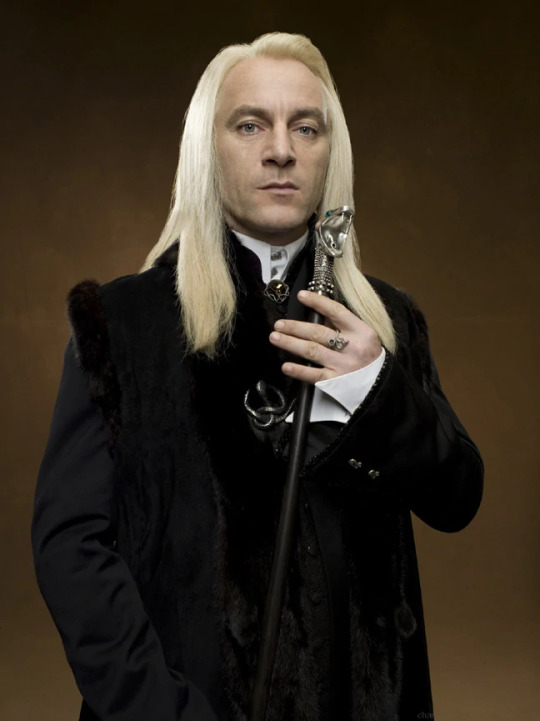
(this character matters a lot more)
And it isn’t just that he is iconic, I mean Boba Fett is iconic and he barely does anything, but Malfoy is loved. I mean there is a Tv Trope “Draco in Leather Pants” for a reason, in fact in many ways he is more beloved and admired than Ron, who is an actual character who does stuff. And I can’t empathies this enough, the sheer amount of Malfoy fanfiction out there is overwhelming, I know fanfiction will elevate any character given enough time, but there is a reason why I know about this, despite never reading HP fanfiction. I mean the Very Potter Musical makes Malfoy the secondary protagonist on equal billing to Harry Himself, and honestly gets more of an arch. Which is particularly puzzling because again
Malfoy isn’t that important of a character.

Almost every Malfoy scene actually in the books follows certain beats, and you can break them down. Malfoy approaches Harry, Harry’s friends, or some helpless weak kid who Harry feels obligated to protect, Malfoy is a colossal asshole, and he either leaves smugly or is humiliated. Or Malfoy actively tries to do something dickish like dress up like a dementor, or ambush Harry &co on the train, which inevitably back fires and he ends up humiliated. Even random lines that mention him basically boil down to “Malfoy did something dickish”. Occasionally you will have a scene where some element of the world is explored by something bad happeing to Malfoy, like Harry using the invisibility cloak to fuck with him, or Malfoy being forced to go into the woods, or Malfoy getting turned into a ferret. Until book 6, he is basically just a bit character, who shows up, does something dickish, and then usually gets the shit beaten out of him.
In short
Malfoy in Fandom

Malfoy in the Books

Now there are many reasons why we like Malfoy, some to do with his design (especially in the movies), the fact that Slytherin has the best color scheme (snakes are cool yo), our societies complicated feelings toward aristocracy, and the overall popularity of villians over heroes, the latter point could be its own video. But I’m going to narrow in on three main points, which as an academic, I’m required by law to spell out to you before I explain them
Reader Rebellion and Slytherin’s appeal
Malfoy’s status as “the Bully” vs. his actual character
SHIPPING

(trying too hard)
See, part of the reason why people like Malfoy is because what I call “Reader Subversion”, basically when the audience rejects what the text is telling them to do. The most obvious example is watching bad movies for fun, these movies want to be seen as serious or dramatic, and instead we are just laughing at how bad they are (The Dungeons and Dragons movie is one I recommend). So when the narrative is telling us “Hate this character, look how unlikable we made him” its very tempting to just be like “Screw you, I’ll sympathize with the character”. Another example of this in HP is the embrace of Slytherin, which at least memetically is tied with Ravenclaw for most popular house. Its associated with sexiness, coolness, ambition, and cunning but frankly…those traits aren’t really on display in the books.
(Slytherin in the Fandom)
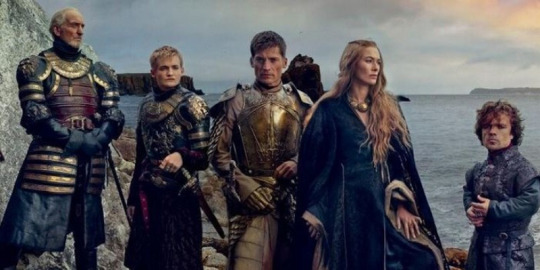
The vast majority of Slytherins we meet are…kinda stupid, just selfish cruel vindictive spoiled assholes who only care about protecting their status. Its less sexy vampires, and more Trump administration entitlement.
(Slytherin in the books)
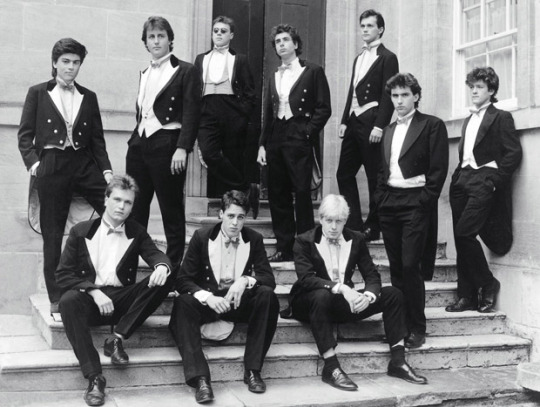
But because the books are telling us so much how bad this house is, how much they suck, how much they are the “bad guy house” it’s pretty tempting to reject the narrative and find reasons to like them. Topic for another video, but I notice this is popular when the narrative is very obvious about how much we should hate an antagonist ,and when the antagonists are more annoying than actually threatening.
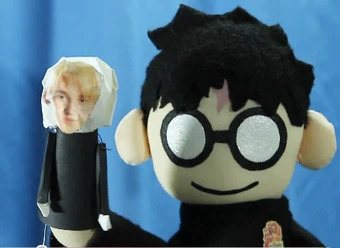
This instinct is especially important because that is one of the major themes of the book in the character of Snape. Everything about the character is designed to make us dislike him, he is cruel, selfish, petty, vindictive, and is actively abusing his position of power to psychologically torment children. He is given all the “bad guy” physical characteristics, he dresses in black, and pretty much does something dickish in every scene he is in. And critically…he is the good guy. The point the book is making is that even if somebody is a massive asshole, that doesn’t necessarily mean they don’t possess positive qualities. This is arguably the main theme of the series, that people have more to them than we first imagine, we see this with Neville, the Crouches, Dumbledore, McGonagall, the Marauders, REB, Fudge, and Dudley all relate to this them.
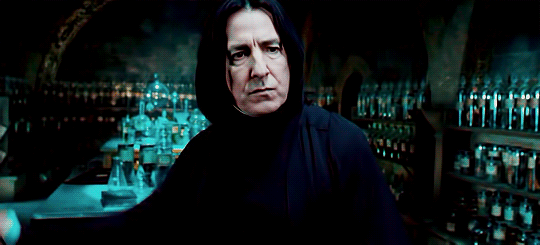
The inverse of Snape is James Potter, who is revealed to have been an arrogant bully (and incidentally my second favorite characters in the series). Now this is a topic for another video, but I think that the greatest failing of the HP series is not really following through with this theme, for every character who learn more about, there are others who stay the same, Lilly Potter and Voldemort being the worse examples. But this finally gets to the problem of Malfoy
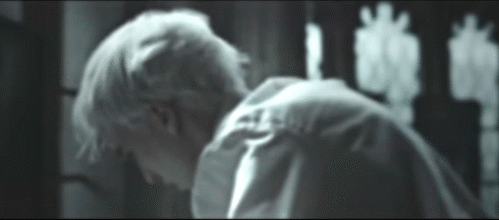
See from the start Malfoy is coded as somebody who isn’t just a bad person, but also a simplistic one, he has a very clear role as a character, of “The Bully.” Basically, the Bully exists to be a minor antagonist to the hero, and possibly embody the writer’s childhood issues. This character is like the terminator of petty spite, he will go out of his way to make the protagonists miserable in the most needlessly cruel way possible. They will relentless pursue fucking with the protagonists at the expense of even their own basic self-interest. This is one of the most overdone, tired, and uncreative roles in fiction, I’ve always hated bully characters and I feel they make the problem of childhood bullying a lot worse because it doesn’t recognize where the instinct to bully comes from, and how complicated it is. What the stranger in a ski mask is to understanding rape, so this character is to understanding bullying. Bully characters exist to be generic antagonists, so they are almost anniversary awful. The only examples I can think of who are good are Cordelia from Buffy…and Draco Malfoy.

Cause when you break it down, Malfoy has motivations, relationships, goals, ideals, insecurities enough to make a full character, or at least a resemblance of one. He truly loves his family, he has some massive set of issues and he loves his family. Its honestly kinda compelling how he like “yeah I’m going to be evil when I grow up” but that same wimpness that makes him less threatening to Harry is also his greatest virtue, he simply isn’t strong enough to be truly evil and that is kind of a good thing. Honestly its sort of the anti-Neville, while Neville is a giant coward except when the chips are down and that is his greatest virtue, Malfoy acts tough until shit gets real and that is also his greatest virtue. Cowardice makes him a better person, in contrast to Crouch or Riddle who are extremely brave and cruel.
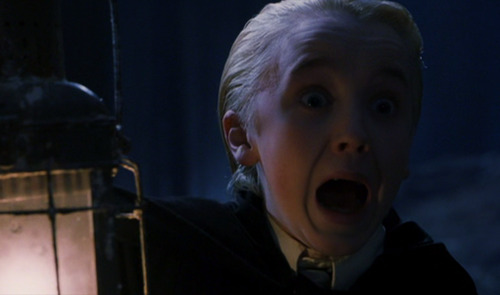
Also when compared to his father, you realize Draco is basically desperately trying to be something he isn’t, a cross between a Lannister and a Bond villain and he just can’t quite manage it. And his frustration with Harry comes in large part because Harry kinda has everything Malfoy desperately wants all without “earning it”. Draco is obviously somebody who is pressured a great deal by his family to succeed and has a lot to live up to, and deep down doesn’t’ really think he is up to the task. And as we see in book 6, he isn’t. Harry meanwhile basically has what Malfoy wants the most without even trying, which makes Malfoy risk thinking about his own inability to live up to his father’s standards which leads him to lash out. It isn’t a super complicated character but there is potential, which is never really explored in the books because Rowling doesn’t like him.

There is potential for a fully character there, and it honestly reminds me of Snape, we are given a character whose every action is coded bad but if we pay attention we realize there is more personality there than our initial impressions give credit for. But unlike Snape, we don’t actually get rewarded for looking closer to Malfoy, if you pay close attention you realize there is more to him but the narrative basically doesn’t care about him. The reader isn’t rewarded for taking the book’s advice and examining the character beyond the trappings of his presentation, which is one of the most frustrating experiences you can get as a reader, feeling all the work you put in was for nothing. And that frustration is, along with radiation poisoning, the greatest impetus for the creation of fanfiction, which is basically the result of stories cockblocking the audience.
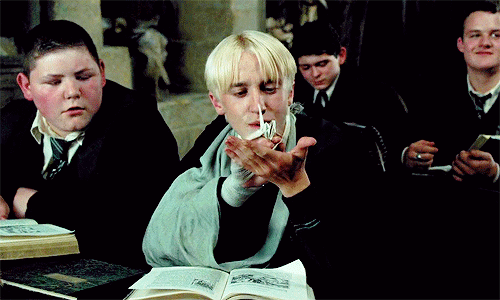
(did this happen in the movies I don’t even remember)
This goes to the shipping thing. Full up, I don’t ship Harry/Malfoy, in large part bceause of how much of Harry’s character is determined by his internal narration, and that to me disproves any indication that Harry likes Malfoy. He spends so little mental energy on Malfoy, when ever he encounters him he is like “oh yeah that guy is a shit..I bet he likes Thatcher” but when Malfoy isn’t on screen Harry doesn’t really care, he has more important things to worry about like being British and having a shockingly high pain tolerance. The only time when Malfoy seems to occupy Harry’s thoughts its the 6th books, and only when there is a plot reason, and in the 7th he doesn’t care again. Compare this to how he thinks about Cho Chang, where he spends mental energy on her even when she isn’t on screen. Harry just doesn’t care.

BUTTTTTTTTTTTTTTTTTTTTTT
Malfoy does. Malfoy over the course of the book goes dramatically out of his way to fuck with Harry Potter, he dramatically inconveniences himself in order to fuck with Harry. in the first book he sneaks out at night to try to fuck with Harry Potter for its own sake and gets caught for it. He dresses up in dementor robes to mess with him, he waits in hallways to make fun of him, he designs a bunch of badges to mock him, like Malfoy seemingly goes out of his way to fuck with Harry above and beyond the norm. So...why
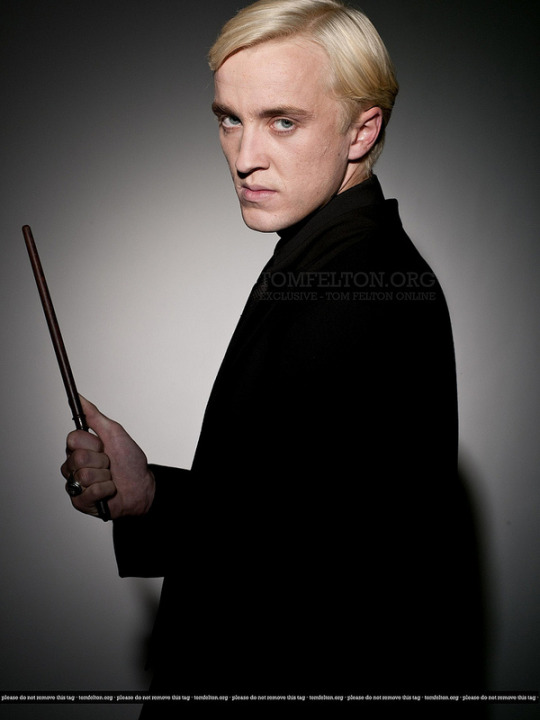
(I”M AN ADULT)
Well the actual reason is that Malfoy is the Bully character and that is what Bullies do, which is why bullies in fiction are often so boring and don’t resemble real life bullies, who are much closer to Snape or James Potter. But this doesn’t work with Malfoy because the character is just well written enough that you have to ask “wait why is this guy acting so obsessed”
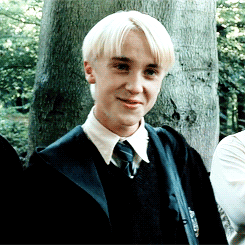
(WTF is he doing in this shot?)
And that is where some of the shipping comes from. Its not necessarily true, since you could just read it as Malfoy being super insecure and envious, but you could easily also read it as just “Malfoy has a crush on harry and is a shithead” Repressed homosexual lust is as good explanation as many for his weird fixation on Harry. It certainly makes more sense than “he is just evil” which
seems to be the canon.
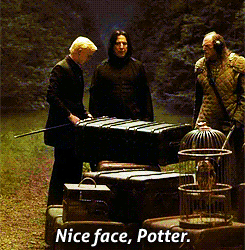
TLDR, Malfoy is interesting because the writer seems to actively dislike him and dismiss him like the Tory punk that he is, but the fandom loves him so much that they have turned him into a whole new character the reason why is that he is just well written enough to be intriguing but has no follow through.
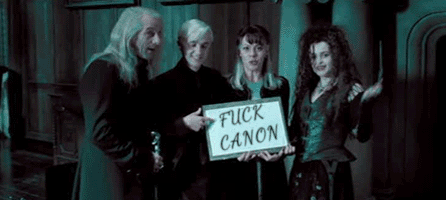
Also who names their kid Scoripus Hyperion Malfoy jesus christ this guy is the Jacob Rees Mogg of the HP series.
27 notes
·
View notes
Text
Into the Object Hole:
Why is Nearly Every Object Show Flash-Animated?
(warning: a big, gigantic ramble generated by the mind of a comic artist)
I’m asking this question because I was bitten by the “Object Show” bug myself! It’s become a niche but easily replicated genre of its own within the animation community. Starting with the eponymous Battle For Dream Island (a show I think we’re all familiar with), we’ve seen many creators follow suit in the seemingly simple formula of having a bunch of inanimate objects participate in a game show-esque competition.
This is not to claim that Object Shows are unoriginal or overdone at this point: on the contrary. With the advent of resources for learning writing, animation, et cetera, I feel there’s a massive amount of potential that this community has, until now, mostly neglected. Battle for BFDI is, from what I can tell, reveling in its own, unique premise in the way it wants to. Inanimate Insanity’s second season has, as of late, recognized its potential to communicate a story about change and growth within individuals and the world around it. Unfortunately, I haven’t watched many shows, but I feel I’ve gotten my point across.
In another post, I asked about shows that didn’t use Flash, so i’m going to be responding to those before I embark on my tangent.
@apcwoc said: djshjksjhhdj most of the shows are probably done on flash because a lot of them were started when the og creators where much younger and flash is the easiest and most reliable to use when people start out animating
that’s a common thread i’ve been finding!! one of the earliest object shows, Animation Island by legotd61, was created a year after BFDI—and at the time, legotd61 was 7 years old. granted the animation & visuals aren’t the most jaw-dropping thing in the world, but they were a kid so it’s automatically charming. in like, a kid sense.
@demi-gray suggested Modern Objects as a non-asset-using show!
youtube
Unfortunately, it still relies on assets for arguably the most important visuals: the characters! They do use the capabilities of Flash more extensively than other shows (that I know of), which makes watching the characters do their thing a lot more fun and engaging. The unique style compared to other shows definitely helps out a lot as well!
@payjayisgod said: i mean, i do frame-by-frame all the time, but for the sake of saving time i’ll be using assets for the bodies (gonna try doing everything else with frame-by-frame) in my own series i’ll be making with some friends ^^“ if you wanna see my animations my youtube is Icedog McMuffin :0c
PLEASE show me your show when you do it, because your animations are!!! really cute!!! also i’d LOVE to see stuff that takes the path of Modern Objects: with asset bodies, yes, but everything else is done according to the needs of the visuals. Use your medium to the best of its ability!
@dottival said: I once saw someone who Wanted to do frame-by-frame, but they never got their show off the ground. Mostly because they never really started??
you can’t just. tell me this. and not say who this person is (unless they want their identity under wraps, which i’ll respect)!!!! I’d love to ask them about their thought process towards their show, unless they didn’t actually plan much. I want to do some... ReSearch....
Speaking of planning, the thing that enchants and haunts me most about object shows is how much is going on behind the scenes. This is for any animated show, really, because as a bitty comic artist, I had no clue where to begin. I’ve started to draft and worldbuild for my own show, but I can’t help but wonder how much of it is done for other object shows.

(this is a thumbnail for a setting on my show!)
The medium, by default, demands attention on the characters at the forefront. The premise generates interest, the aesthetics (aren’t necessary but) lead viewers in, and the subject(s) of the show is what keeps audiences engaged. No matter what the creator(s) choose as the subject, they must make sure it’s polished to their best abilities, while ensuring other elements of their medium is properly balanced.
If you’re creating a character-driven narrative, for example, you’ll want to focus on the development of your characters. And, since it’s easiest to relate to concrete characters, that’s what novice content creators focus on developing as their content’s primary subject (and what professional content creators master).
However, the development of, say, a character is more often than not put into the hands of the viewers. How? Viewer participation: having the audience vote off who leaves a competition.
An interesting concept as, typically, animated shows require oodles of planning in order to convey the story it wants to the best of its ability. This makes the typical object show a challenge (forgive the word-play) to pull off properly, despite being deceptively simple enough of a feat on the surface. Character development can be volatile, as any character can be booted off (depending on how well you can predict a character getting eliminated).
Following this, the difficulty of creating a cohesive and well-written story through the Object Show format is very, very high. After all, you need to place time in your resources as wisely as possible, in order to avoid taking too much time on an end product you may not even like a little while later. The elimination of one character may upset a part or the entirety of the show’s plotline, if a creator is not careful.
Inanimate Insanity’s writing was able to excel at its greatest the moment viewer voting was dropped. One of the best shows in this genre (in my opinion), Modern Objects, isn’t even an object show: it’s formatted like a sitcom, and focuses primarily on characters and comedy. The one object show I was able to find that was primarily frame-by-frame animation (thank you, @bfb-basard!), Race to the Mansion of Tomorrow, is 100% script-driven; meaning, no viewer participation. This is the same for a few other shows as well, though I am not aware of them at this point of time.

(a snapshot of my animation process: this is for an animation of my OCs Milt and Malt, put to the audio of Big Bill Hell’s Cars.)
So why Flash? The answer is because it’s just easier. Not in the sense that the animators of these shows are lazier, but because animating in Flash saves time. Unless you’re putting all your stops into your show, or the contestants will always be present / aren’t quite as important to the narrative, you absolutely cannot afford to waste time and energy on things that can get thrown away later. Either that, or you don’t know where a character or a plotline or what have you will build up to, so you want to make sure whatever you do make isn’t wasted.
(Granted, I always feel there’s always time for weird plots to be resolved until it’s the very end, but retcons are also an option?)

You see this video? It’s a pretty simple animation of just a little softball walking around.
It took me 2 or 3 hours, give or take, to finish. Nearly every frame is unique, and I drew them all with my hands and my tablet, nothing else. All moving parts are either animated in 2′s or 1′s—the latter of which being 1/24th of a second. There are 35 drawn frames overall, stretched out onto 127 individual frames that constitute the entirety of the animation.
In other words, this clip is 5 seconds long.
If you want to finish an object show within your lifetime, let alone within 5 years, then Flash will be your best friend. It’s good, revolutionary technology that will make your life easier. With Flash, you don’t have to draw things over and over and focus instead on the motion, not the artwork.
Not only that, but being able to finish in a timely manner will help smaller content creators as, since we’re small and have small audiences, not everyone has a long enough attention span to hang onto you for decades. Certain shows like BFB and Inanimate Insanity have the advantage of popularity, so they can take their time with both the show and life (but they’re still rushed by their audience anyways so it’s a double-edged sword).
If you want to tell a story, consider what medium you tell it through wisely. Animation isn’t the only way, but I know for a fact that, if I get there, my show will be frame-by-frame. Why? Because I consider the artwork and the motion in my story just as important as my characters, if not moreso. You might not.
You can make it 3-d animated, claymation, traditionally animated, digitally animated, Flash, frame-by-frame, what have you. You can write your show as a novel, a script, a screenplay, a radio play, what have you. You can illustrate it as a children’s book, a comic, a graphic novel, or even an illustrated novel.
One of my favorite shows, up there with Modern Objects, is a comic by @swabsbloo called Escape From Abject Reality (which you can read on it’s own blog at @efarwebcomic! Please read it! PLEASE READ IT! PLEASE!!! PL). Swabsbloo takes the premise of object shows and simultaneously puts it on its head while playing it straight: a bunch of objects wake up in an oddly absent field, only to figure out they’ve been trapped in a game show-themed death trap controlled (...?) by a(n apparent) sociopath named Snake Oil. You should read it. You should read their comic.

Hell, does your object show even need to be an object show? You can create stories that are beyond inanimate objects, or stories beyond competitions. Again, Modern Objects isn’t a competition show. You can base your characters off of objects as well, without needing to make them explicitly an object. The show I mentioned earlier, Race to the Mansion of Tomorrow, takes this latter approach for the most part!
youtube
As a storyteller, what I obsess about the most is storytelling. I love seeing all forms of it, and the potential that this community’s genre has astounds and fascinates me. The way in which we view the story doesn’t have to be important, but I find the ones I enjoy the most are the ones that utilize its medium to the best of its ability. It doesn’t have to be the best, it just needs to try.
So what do you want to try?
#osc#object show#bfb#inanimate insanity#analysis#long post#the coward speaks#modern objects#efar#escape from abject reality#rttmot#race to the mansion of tomorrow#its#it's the show#my art#mango's art#wip#apcwoc#demi-gray#payjayisgod#dottival#bfb-basard#please god save me from these tags#anywho!!! i hope!!!! this made sense!#i basically went on a tangent every time i started a tangent so like#there is a LOT of text#i tried putting some images & videos to make consuming easier#but i couldn't put links because otherwise tumblr would destroy this post#i am UP for TALKING ABOUT THIS!!!#because i think this phenomenon is kind of fascinating
81 notes
·
View notes
Link
So. You might have guessed that I like a bunch of different tabletop RPGs. You might have put together that I like using systems that are designed to tell a certain kind of story to tell that certain kind of story rather than trying to jam a kind of narrative that a system doesn’t support into it just because you happen to like it. Dungeons and Dragons is the most frequent perpetrator of this kind of behavior and it’s gotten to the point where it’s easy to just rag on 5E generally rather than just the stuff that gets on my nerves. So I think it’s important to step back and take a look at the sorts of things D&D (5E in particular) tends to do well and why people are so obsessed with it.
The first reason is probably the easiest to parse, at least to me. Dungeons and Dragons has a lot of cultural recognition. It’s the game most people think of when they hear ‘tabletop role playing game’. It’s arguably the oldest one around, and definitely the one that’s made the most money over the course of its lifetime. This kind of recognition and fame can be self-perpetuating; if the only game a person is likely to have heard of is Dungeons and Dragons, or it’s the game they’ve heard the most about, then if they play an RPG then that’s the one they’re probably going to gravitate towards. It’s also a game that hits a lot of similar beats to some other pretty big cultural properties. Lord of the Rings is the biggest, but it also has a connection to more recent properties like Stranger Things and an increased number of celebrities that reveal how they enjoy it.
Another big part of the appeal, I think, is how similar Dungeons and Dragons is to an open world video game (likely because many of these games take some cues from D&D). Those types of video games are extremely popular (Skyrim, Red Dead Redemption, Grand Theft Auto, etc.) and the ease with which Dungeons and Dragons can tell similar stories isn’t hard to see with its focus on combat and exploration of somewhat limited environments (dungeons, towns, continents). Dungeons and Dragons is especially attractive to the sort of person who enjoys those kinds of video games but wishes that they had more of an option to choose what they find important in the world and to tell stories more focused on their particular taste. It opens up the idea that a character could feasibly solve a problem in a way outside the limits of a game engine and the imagination of the game designers. Now, a lot of the way gamemastering works in Dungeons and Dragons can go against a lot of this idea (railroading can be a big problem in games that require a lot of system mastery from the GM) but the fact is that the possibility of extreme character freedom is still there.
In a similar vein, Dungeons and Dragons is appealing from the perspective of its progression and advancement systems being easy to understand. Kill X number of goblins, gain power. This is the perspective that the game itself uses- combat is the only sure way to gain experience points and gain power/skill. There is also mention of handing out experience for noncombat encounters, but this is framed as based entirely on whether the GM decides to do so and it’s also up to them how much to give out, whereas combat is very clear about exactly how much experience the encounter is worth. This gives a very clear way for players to gain power, skill, and knowledge. The system of character progression is also easy to understand in a way similar to video games. You get a handy chart that tells you exactly what your character will learn/how they will grow at any given level. Certainly you’ll get some choices at some of those times, but overall your progression is more or less mapped out by level 2 or 3.
Another mark in D&D’s favor is its focus on long term play. Many other RPGs out there just aren’t meant to be played for the years it can take for a D&D campaign to reach its conclusion. I would hazard a guess that most D&D games never actually reach such a conclusion anyway, but that’s not entirely the point. The point is that the possibility is a draw. It’s fun to imagine a years-spanning epic fantasy where you get to control one of the main characters. This kind of long term play also has the side effect of pushing other games out of the way. Why learn a different system that will only last you 20 sessions at most when this one gets you years of entertainment? Having a game that lasts years also naturally pushes aside other games just from a time investment perspective. A person only has so many hours in a day. Under normal circumstances they aren’t going to have time to play in multiple, several-hour long games. So if they’re playing in one that lasts for years, that’s going to be the game they play without giving any time to other systems or styles. It’s also just a good excuse to socialize with those that have similar interests, and if it’s something that lasts for a long time then so much the better. It can be hard to find time to get together with friends between work and appointments and chores and having something concrete like a game to focus on can help.
D&D also has essentially mechanically enforced teamwork. While there can be traitors in a band of adventurers, it’s not really something that’s frequently beneficial. Given that it is so focused on combat as well as the way those combats are set up, it is frequently not only beneficial but necessary for the players to work together in order to defeat their foes. The classes are set up to complement each other in combat situations. Players are encouraged to think about how their characters can work together during the game. Similarly, secret-keeping and betrayal can be somewhat awkward as the system is not set up to handle it, leaving it entirely up to the creativity and design sense of the GM. If the kind of game a person is looking for is just a fun romp with friends, then having a game that fully encourages cooperative play is going to have a natural advantage over one that is more interested in telling a story about complex relationships.
So. That’s it. Those are the reasons I came up with over my lunch hour that I think comprise the reasons Dungeons and Dragons is such a behemoth in the tabletop RPG hobby. As usual, none of this is the result of any real research on my part- it’s just my observations and extrapolations. There’s no real point or change I’m looking for either- I’ve just spent so much time thinking and reading all these other games it made me want to go back to D&D and think about why it might have the kind of audience it does. It’s also partially that I want to understand its popularity when thinking about my own design, but mostly just idle thoughts.
3 notes
·
View notes
Text
SYABM rants about fanfic 20XX.
Someone: [Writes a cute fancomic about Helen treating Voyd like a daughter.]
Me: Oh, that’s nice. And there are three backstory comics. Let me just-
First Fic: Voyd is trans. And she just came out to Helen faster than that one trans lady in Mass Effect Andromeda.
Me:

Tumblr? Tumblr, please, listen to me. Making a character a minority does not automatically make them better or more interesting.
In fact, this seems remarkably contrived. Voyd barely knows Helen. "I used to be Cody” seems like something you’d work up to, not just drop in your first chat, especially if the fic is supposed to be set in the vaguely-sixties. Which I’m not entirely sure it’s supposed to, given Voyd’s job at Target in a modern uniform, but even in the present, there are very few people who would just drop that on a woman who’s nearly a stranger.
In fact, I’ve read all four fics, and Voyd being trans has basically nothing to do with the overall plot, except for the part where it gives Helen a chance to Show Concern and “adopt” Voyd. The other three fics don’t mention it even once. You could’ve replaced it with “I’m poor and estranged from my family over the whole powers thing”, which would actually be more relevant to the themes of the franchise, and something Helen could empathize ov -
Wait a second. Wasn’t Voyd getting a salary from the Deavour company? They must’ve paid her something, right? If nothing else, Evelyn mind-controlled them, which arguably makes the company liable, and that’s even if Winston wouldn’t just throw money and therapists at them out of sheer moral conviction. Voyd personally helped save the day-
Oh, wait. This whole “Voyd is trans” thing is a fandom meme, because she’s not traditionally feminine. Needless to say,

Brick is much less popular for trans headcanons, even though she’s much, much more butch than Voyd. Says something about the fandom, doesn’t it?
Personally, if I was writing Trans Voyd, she wouldn’t come out until she trusted, really trusted Helen, after their friendship/”adoption” had more time to develop. Maybe Helen figures it out herself; we already know she’s good at sleuthing, so it wouldn’t be hard for her to go “hey, wait a minute” and have a talk with Voyd, who expects to be rejected*. There’d be hints before then, but I wouldn’t dump it on people right out of the gate. Heck, I’ve written LGBT characters before, and I somehow managed not to beat my readers over the head with their sexuality or use it to pander to diversity fetishists.
“Hey, aren’t you a Christian?” I hear you say. Yes, yes I am. And I’m complaining about a story which wrote a trans character poorly, and talking about how it could be done better. Being a minority should not be treated like a “you should care about this character now” button.
* To be fair, her body language, as described in the fic, appears to be anticipating a bad reaction, which leads to the question of “why are you just blurting this out?” Narratively speaking, it means a lot if Helen is the one who makes the first move. Especially if she has to take a second for it to sink in; even if she’s progressive - and she probably is - people need time to recontextualize things. Like that one scene in this season of The Flash with Barry in the van. Reaction shots are important, even in prose.
And if Voyd decides to come out, it should be in response to realizing she feels safe with the Parrs. Again, after development.
36 notes
·
View notes
Text
Medieval Magic Week: Witchcraft in Early Medieval Europe
Apologies for not getting to this last week, but I will try to be at least semi-reliable about posting these. If you missed it: I’m teaching a class on magic and the supernatural in the Middle Ages this semester, and since the Tumblr people also wanted to be learned, I am here attempting to learn them by giving a sort of virtual seminar.
Last week was the introduction, where we covered overall concepts like the difference between magic, religion, and science (is there one?), who did magic benefit (depends on who you ask), was magic a good or a bad thing in the medieval world (once again, It’s All Relative) and who was practicing it. We also brought in ideas like the gendering of supernatural power (is magic a feminine or a masculine practice, and does this play into larger gendered concepts in society?) and did some basic myth-busting about the medieval era. No, not everybody was super religious and mind-controlled by the church. No, they were not all poor farmers. No, not every woman was Silent, Raped, and Repressed. Magic was a common and folkloric practice on some level, but it was also the concern of educated and literate ‘worldly’ observers. We can’t write magic off as the medieval era simply ‘not knowing any better,’ or having no more sophisticated epistemology than rudimentary superstition. These people navigated thousands of miles without any kind of modern technology, built amazing cathedrals requiring hugely complex mathematical and engineering skill, wrote and translated books, treatises, and texts, and engaged with many different fields of knowledge and areas of interest. They subjected their miracle stories to critical vetting and were concerned with proving the evidentiary truth of their claims. We cannot dismiss magic as them having no alternative explanation or way of thinking about the world, or being sheltered naïve rustics.
This week, we looked at some primary sources discussing ‘witchcraft’ beliefs in early medieval Europe, which for our purposes is about 500—eh we’ll say 1000 C.E. We also thought about some questions to pose to these texts. Where did belief in witchcraft – best known for early modern witch hunts – come from? How did it survive through centuries of cultural Christianisation? Why was it viewed as useful or as threatening? Scholars have tended to argue for a generic mystical ‘shamanism’ in pre-Christian Europe, which isn’t very helpful (basically, it means ‘we don’t have enough evidence, so fuck if we know!’). They have also assumed that these were ‘superstitions’ or ‘relics’ of pagan belief in an otherwise Christian culture, which is likewise not helpful. We don’t have time to get into the whole debate, but yes, you can imagine the kind of narratives and assumptions that Western historiography has produced around this.
At this point, Europe was slowly, but by no means monolithically, becoming Christian, which meant a vast remaking of traditional culture. There was never a point where beliefs and practices stopped point-blank being pagan and became Christian instead; they were always hybrid, and they were always subject to discussion and debate. Obviously, people don’t stop doing things they have done a particular way for centuries overnight. (Once again, this is where we remind people that the medieval church was not the Borg and had absolutely no power to automatically assimilate anyone.) Our first text, the ‘Corrector sive medicus,’ which is the nineteenth chapter of Burchard of Worms’ Decretum, demonstrates this. The Decretum is a collection of ecclesiastical law, dating from early eleventh-century Germany. This is well after Germany was officially ‘Christianised,’ and after the foundation of the Holy Roman Empire as an explicitly Christian polity (usually dated from Charlemagne’s coronation on 25 December 800; this was the major organising political unit for medieval Germany and the Carolingians were intensely obsessed with divine approval). And yet! Burchard is still extremely concerned with the prevalence of ‘magical’ or ‘pagan’ beliefs in his diocese, which means people were still doing them.
The Corrector is a handbook setting out the proper length of penances to do (by fasting on bread and water) for a variety of transgressions. It can seem ridiculously nitpicky and overbearing in its determination to prescribe lengthy penances for magical offenses, which are mixed in among punishments for real crimes: robbery, theft, arson, adultery, etc. This might seem to lend legitimacy to the ‘killjoy medieval church oppressing the people’ narrative, except the punishments for sexual sins are actually much lighter than in earlier Celtic law codes. If you ‘shame a woman’ with your thoughts, it’s five days of penance if you’re married, two if you aren’t, but if you consult an oracle or take part in element worship or use charms or incantations, it could be up to two years.
Overall, the Corrector gives us the impression that eleventh-century German society was a lot more worried about whether you were secretly cursing your neighbour with pagan sorcery, rather than who you’re bonking, even though sexual morality is obviously still a concern, and this reflected the effort of trying to explicitly and completely Christianise a society that remained deeply attached to its traditional beliefs and practices. (There’s also a section about women going out at night and running naked with ‘Diana, Goddess of the Pagans’, which sounds awesome sign me up.) Thus there is here, as there will certainly be later, a gendered element to magic. Women could be witches, enchantresses, sorceresses, or other possible threats, and have to be closely watched. Nonetheless, there’s no organised societal persecution of them. Formal witch hunts and witch trials are decidedly a post-Renaissance phenomenon (cue rant about how terrible the Renaissance was for women). So as much as we stereotype the medieval world as supposedly being intolerant and repressive of women, witch hunts weren’t yet a thing, and many educated women, such as Trota of Salerno, had professional careers in medicine.
The solution to this problem of magical misuse is not to stop or destroy magic, since everyone believes in it, but to change who is legitimately allowed to access it. Valerie Flint’s article, ‘The Early Medieval Medicus, the Saint – and the Enchanter’ discusses the renegotiation of this ability. Essentially, there were three categories of ‘healer’ figure in the early Middle Ages: 1) the saint, whose miraculous power was explicitly Christian; 2) the ‘medicus’ or doctor, who used herbal or medical treatment, and 3) the ‘enchanter’, who used pagan magical power. According to the ecclesiastical authors, the saint is obviously the best option, and believing in/appealing to this figure will give you cures beyond the medicus’ ability, as a reward for your faith. The medicus tries his best and has good intentions, but is limited in his effectiveness and serves in some way as the saint’s ‘fall guy’. Or: Anything the Doctor Can (Or Can’t) Do, The Saint Can Do Better. But the doctor has enough social authority and respected knowledge to make it a significant victory when the saint’s power supersedes him.
On the other hand, the ‘enchanter’ is basically all bad. He (or often, she) makes the same claim to supernatural power as the saint, but the power is misused at best and actively malicious and uncontrollably destructive at worst. You are likely to be far worse off after having consulted the enchanter than if you did nothing at all. Both the saint and the enchanter are purveyors of ‘magical’ power, but only the saint has any legitimate claim (again, according to our church authors, whose views are different from those of the people) to using it. The saint’s power comes from God and Jesus Christ, the privileged or ‘true’ source of supernatural ability, while the enchanter is drawing on destructive and incorrect pagan beliefs and making the situation worse. The medicus is a benign and well-intentioned, if not always effective, option for healing, but the enchanter is No Good Very Bad Terrible.
The fact that ecclesiastical authors have to go so hard against magic, however, is proof of the long-running popularity of its practitioners. The general public is apparently still too prone to consult an enchanter rather than turn to the church to solve their problems. The church doesn’t want to eradicate these practices entirely, but insists that people call upon God/Christ as the authority in doing them, rather than whatever local or folkloric belief has been the case until now. It’s not destroying magic, but repurposing and redefining it. What has previously been the unholy domain of the pagan is now proof of the ultimate authority of Christianity. If you’re doing it right, it’s no longer pagan sorcery, but religious miracles or devotion.
Overall: what role does witchcraft play in early medieval Europe? The answer, of course, is ‘it’s complicated.’ We’re talking about a dynamic, large-scale transformation and hybridising of culture and society, as Christian religion and society became more prevalent over long-rooted pagan or traditional beliefs. However, these beliefs arguably never fully vanished, and were remade, renamed, and allowed to stay, without any apparent sense of contradiction on the part of the people practicing them. Ecclesiastical authorities were extremely concerned to identify and remove these ‘pagan’ elements, of course, but the general public’s relationship with them was always more nuanced. When dealing with medieval texts about magic, we have a tendency to prioritise those that deal with a definably historical person, event, or place, whereas clearly mythological stories referring to supernatural creatures or encounters are viewed as ‘less important’ or as the realm of historical fiction or legend. This is a mistake, since these texts are still encoding and transmitting important cultural referents, depictions of the role of magic in society, and the way in which medieval people saw it as a helpful or hurtful force. We have to work with the sources we have, of course, but we also have to be especially aware of our critical assumptions and prejudices in doing so.
It should be noted that medieval authors were very concerned with proving the veracity of their miracle narratives; they did not expect their audiences to believe them just because they said so. This is displayed for example in the work of two famous early medieval historians, Gregory of Tours (c.538—594) and the Venerable Bede (672/3—735). Both Gregory’s History of the Franks and Bede’s Ecclesiastical History of the English People contain a high proportion of miracle stories, and both of them are at pains to explain to the reader why they have found these narratives reliable: they knew the individual in question personally, or they heard the story from a sober man of good character, or several trusted witnesses attested to it, or so forth. Trying to recover the actual historicity of reported ‘miracle’ healings is close to impossible, and we should resist the cynical modern impulse to say that none of them happened and Gregory and Bede are just exaggerating for religious effect. We’re talking about some kind of experienced or believed-in phenomena, of whatever type, and obviously in a pre-modern society, your options for healthcare are fairly limited. It might be worth appealing to your local saint to do you a solid. So to just dismiss this experience from our modern perspective, with who knows how much evidence lost, in an entirely different cultural context, is not helpful either. There’s a lot of sneering ‘look at these unenlightened religious zealots’ under-and-overtones in popular conceptions of the medieval era, and smugly feeling ourselves intellectually superior to them isn’t going to get us very far.
Next week: Ideas about the afterlife, heaven, hell, the development of purgatory, the kind of creatures that lived in these realms, and their representation in art, culture, and literature.
Further Reading:
Alver, B.G., and T. Selberg, ‘Folk Medicine As Part of a Larger Complex Concept,’ Arv, 43 (1987), 21–44.
Barry, J., and O. Davies, eds., Witchcraft Historiography (Basingstoke: Palgrave, 2007)
Collins, D., ‘Magic in the Middle Ages: History and Historiography’, History Compass, 9 (2011), 410–22.
Flint, V.I.J, ‘A Magical Universe,’ in A Social History of England, 1200-1500, ed. by R. Horrox and W. Mark Ormrod (Cambridge: Cambridge University Press, 2006), 340–55.
Hall, A., ‘The Contemporary Evidence for Early Medieval Witchcraft Beliefs’, RMN Newsletter, 3 (2011), 6-11.
Jolly, K.L., Popular Religion in Late Saxon England: Elf Charms in Context (Chapel Hill: University of North Carolina Press, 1996)
Kieckhefer, R., Magic in the Middle Ages (Cambridge: Cambridge University Press, 2000)
Maxwell-Stuart, P.G., The Occult in Mediaeval Europe (Basingstoke: Palgrave, 2005)
Storms, G., Anglo-Saxon Magic (The Hague: M. Nijhoff, 1947)
Tangherlini, T., ‘From Trolls to Turks: Continuity and Change in Danish Legend Tradition’, Scandinavian Studies, 67 (1995), 32–62.
45 notes
·
View notes